Welcome to the Arizona sun! It goes without saying that the summer heat in the desert can be awful, so keeping your house or place where you work cool requires a reliable air conditioning system.
However, did you know that mounting your air conditioner on the roof has benefits? In this article, we'll examine why, in Arizona, setting up an air conditioner on the roof is the best way to battle the heat.
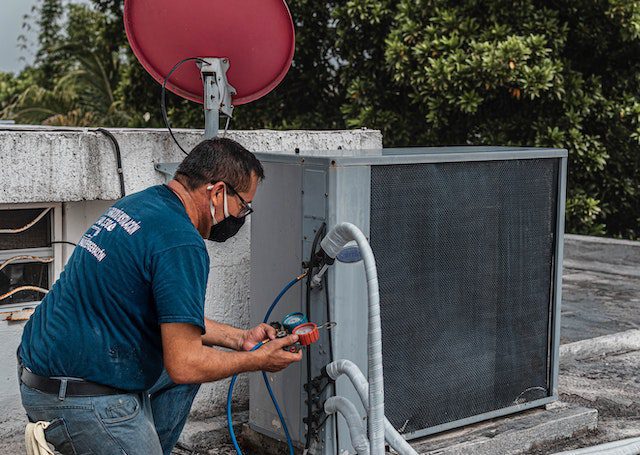
As Arizonans, we know that the desert sun can be brutal in the summer months. Many households and businesses depend on air conditioning systems to be comfortable throughout the summer. But why do so many Arizona residents decide to install their air conditioners on the roof?
For residents of Arizona, installing an air conditioner on the roof is the greatest choice for a number of reasons. First of all, because it is the building's highest point and receives the most direct sunlight, the roof.
This makes it possible for the air conditioner to absorb heat more effectively and maintain the building's interior temperature. Second, the location on the roof makes it simple to maintain and repair the unit. Last but not least, installing a unit that needs a lot of space on the roof is a great idea.
There are benefits to installing an AC unit on the roof, but there are also some significant factors to take into account. To prevent potential issues, it's crucial to ensure that the roof is sturdy enough to hold the weight of the air conditioning unit and that the device is installed and maintained correctly. Additionally, it's crucial to confirm that the location of the unit will allow for proper ventilation.
You can be confident that you're making the greatest choice for your house or place of business by taking the time to explore the benefits and drawbacks of having an air conditioner on the roof in Arizona. Your rooftop air conditioner can give you many years of dependable service with appropriate installation and maintenance.
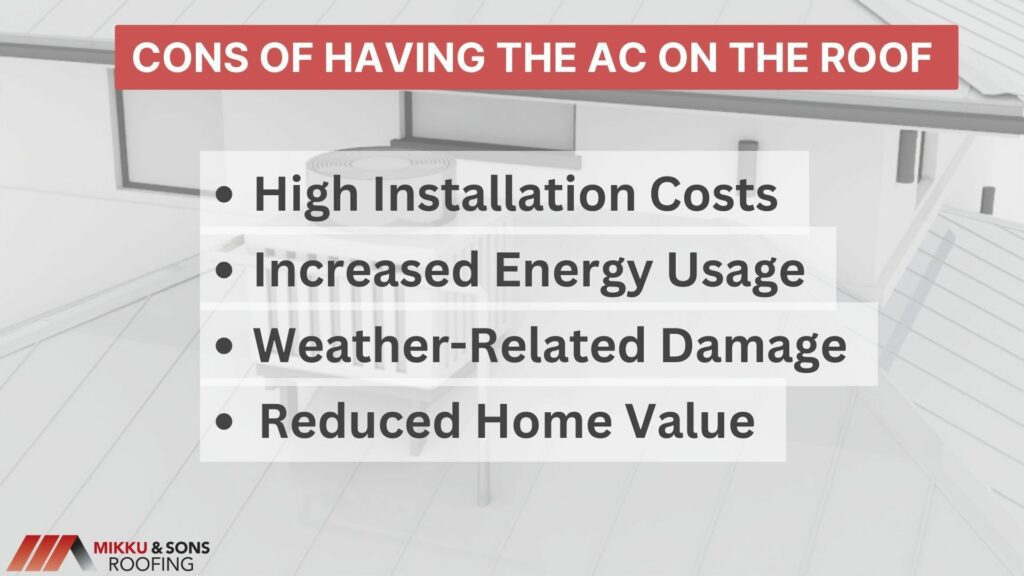
Air conditioning installation on the roof is common in Arizona due to the state's hot and dry climate. Putting an air conditioner on the roof in Arizona has its advantages, there are a few drawbacks that should be considered first.
The high price of installation is one of the major drawbacks of installing a rooftop air conditioner in Arizona. It can be time-consuming and costly to have a new air conditioning system constructed specifically to fit the roof. In addition, the price of labor and supplies to set up the unit might add up quickly. It is also important to factor in the price of any essential maintenance or repairs.
Having an air conditioner on the roof in Arizona also has the potential downside of increasing energy consumption. When the AC system struggles to keep up with the sun's heat, more power is needed to keep the building cool. Because of this, energy costs may rise, and pollution levels may rise as a result of an increase in the use of fossil fuels.
In Arizona, the danger of weather damage is increased when an air conditioner is installed on the roof. Severe weather, such as tornadoes, hurricanes, and hailstorms, are common in Arizona. Air conditioning units and roofs are particularly vulnerable to these elements, which may lead to expensive repairs. The sun's heat may also cause the air conditioner to overheat, which can be disastrous.
Last but not least, an Arizona home's value might drop if an air conditioner is installed on the roof. Many potential buyers may be put off by the sight of an AC unit on the roof, as it can be unsightly and detract from the overall appeal of the home.
A roof-mounted air conditioner may raise monthly energy bills, which might deter prospective buyers and result in a lower selling price.
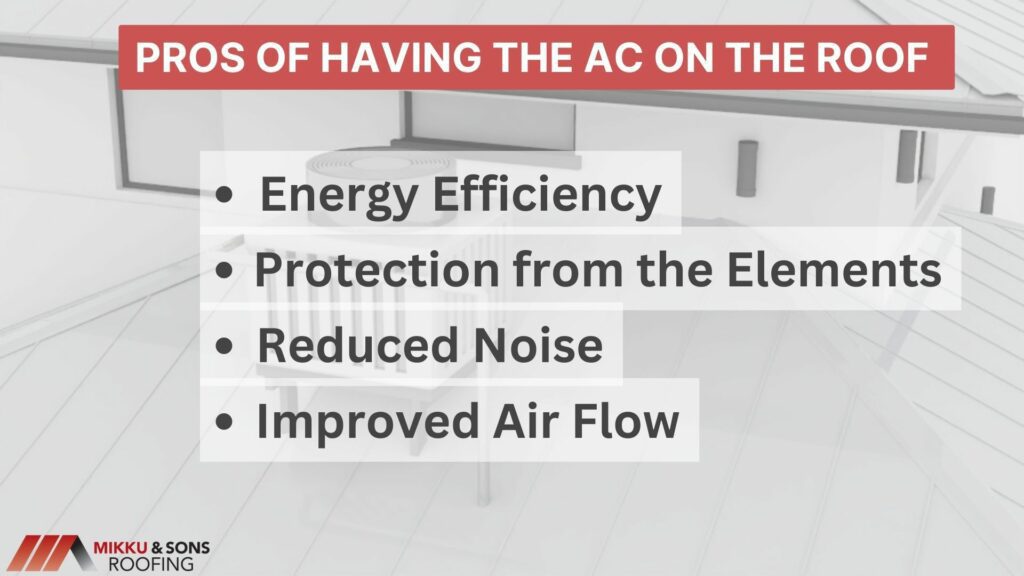
Hot, dry weather and high temperatures are typical of the state of Arizona, making it challenging to maintain a comfortable indoor environment throughout the summer. Installing an air conditioner (AC) on the roof is a popular method of reducing a building's inside temperature.
Arizona residents and company owners are increasingly leaning toward this option due to its potential advantages. Having an air conditioner on the roof in Arizona has several benefits, including the following:
Energy efficiency is a major benefit of a rooftop air conditioner. Installing the air conditioner on the roof allows for more efficient distribution of cooled air throughout the building, leading to lower cooling costs.
Over time, this may have a major impact on how much money you save on your energy expenses. Additionally, the rooftop AC unit can be strategically placed so that it is exposed to the maximum amount of sunlight, which can help to further reduce energy costs.
Putting an air conditioner up on the roof also has the added benefit of keeping it out of harm's way. Due to its high position, the unit is less prone to dirt and dust accumulation and severe weather.
In the long run, this may save money on repairs and maintenance and increase the lifespan of the device. In addition, insects and animals that attempt to enter the unit from the ground are less likely to do damage to it.
Putting an air conditioner on the roof is a great way to cut down on outside noise. The higher the apartment is located, the less probable it is that it will be heard from the rest of the building or the street below. Those with a low tolerance for noise or those who just prefer a peaceful environment at home or work would appreciate this feature.
Putting an air conditioner on the roof is one method for improving ventilation within a building. The placement of the unit may be planned such that the conditioned air is circulated thoroughly throughout the building.
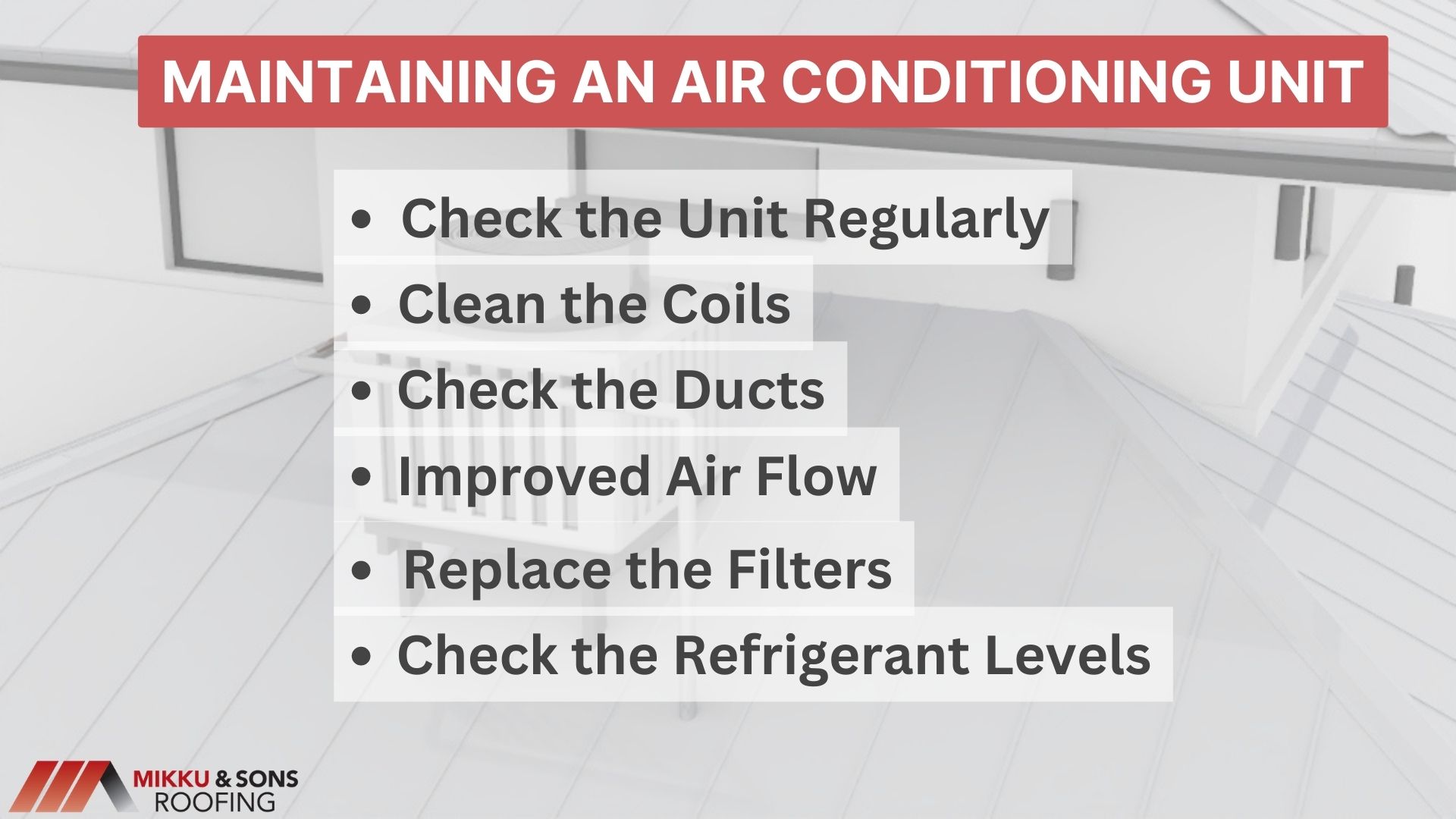
Rooftop air conditioning units need regular maintenance to ensure continued operation. Keeping up with routine maintenance can keep your unit running well, saving you both money and energy.
Keeping an air conditioner in good working order begins with routine inspections. It is important to visually examine the exterior of the device for any evidence of corrosion, damage, or missing or loose components.
Moreover, make sure that all of the filters are clean and in excellent shape, as this will increase the efficiency of the unit. If problems are detected, it is recommended to have the device serviced by a qualified technician.
Cleaning the coils is the next step in maintaining a rooftop air conditioner. It's recommended to conduct this at least once a year, since dirt and debris may accumulate on the coils and cause the system to function less efficiently.
You may use a brush and some mild detergent to clean the coils. Before you begin cleaning the coils, make sure to cut off the electricity to the device.
Duct inspection is another important part of operating a rooftop air conditioner. Ducts need to be inspected for blockages and other damage. You should also look for mold or mildew in the ductwork, since this may have a negative impact on the performance of the HVAC system.
Having the filters changed often is also important. A dirty filter might decrease the effectiveness of the unit, hence it's recommended to change filters at least once a year. Furthermore, keeping the filters clean and changed out on a regular basis keeps the machine free from dust and other particles.
As a last step, be sure to always check the refrigerant levels. Low refrigerant levels might affect the efficiency of the device. However, the device itself might be damaged if the levels are not properly maintained.
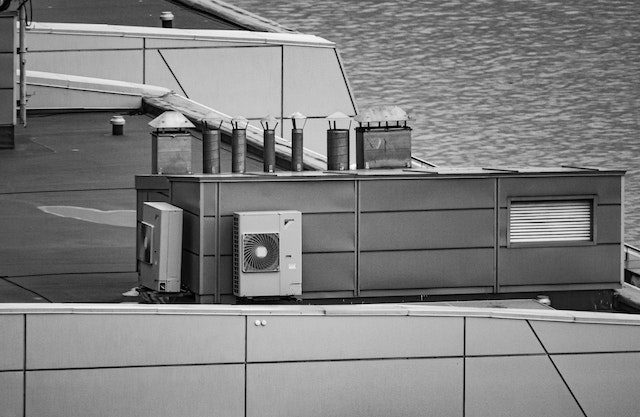
Rooftop air conditioning (AC) units are a specific kind of air conditioning system that are mounted on the roof of a building. Commercial and industrial settings, such as offices, industries, schools, and hospitals, are popular locations for rooftop units. Size, efficiency, features, and installation all play a role in how much a rooftop AC unit will set you back.
Rooftop air conditioner prices are heavily influenced by the system's capacity. British thermal units are the standard for determining the size of the unit (BTUs). Larger units with greater BTU ratings cost more than smaller ones with lower ratings for the same purpose. In addition, the area of the room and the volume of air that has to be cooled should be determined before deciding on a unit so that the right size may be chosen.
A rooftop air conditioner's price might vary depending on how efficient it is. There will be a price premium for higher SEER-rated units compared to their lower-rated counterparts. Yet, high-efficiency units may be worth the initial investment if they help you save money on your monthly energy bills.
A rooftop air conditioner's price may also be affected by the unit's specific characteristics. Humidity regulators, thermostats, digital readouts, and other extras may come standard on certain models. The unit's performance and efficiency may benefit from these additions, but they come at an extra expense.
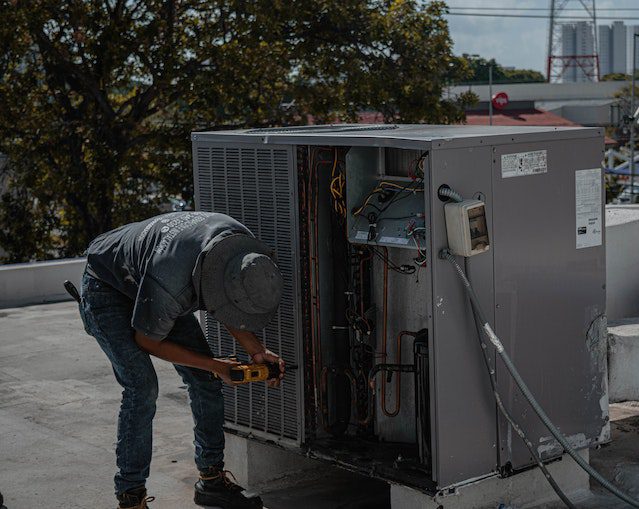
Next, you need to think about how much money it will cost to have an air conditioning unit put up on the roof. The price of installation might change based on factors including the size and complexity of the project, as well as the material used for the roof. Hiring a professional contractor is important for guaranteeing a thorough and secure installation of the unit.
Generally, small residential rooftop air conditioners can range in price from around $500 to $3,500 or more. Commercial rooftop air conditioners can range in price from around $1,500 to $20,000 or more.The final price tag for a rooftop air conditioner depends on many factors.
Common kinds of air conditioning systems in both business and residential structures include rooftop units and those installed in the ground. There are benefits and drawbacks to both options. Rooftop air conditioners are more expensive than ground-mounted units.
The total cost of purchasing, installing, and maintaining an air conditioner might vary widely. Air conditioners installed on a roof often cost more than those put in the ground. Putting the air conditioner on the roof adds more work time and material costs, so it's not a cheap option.
Rooftop installations often take longer than ground installations and need more work and supplies due to the difficulties of getting to the rooftop. The cost may also rise if the rooftop air conditioner has to be fortified against the weather.
Installing an air conditioner in the ground is often more cost-effective than on the roof. This is due to the reduced complexity and lower overall cost of installation. Moreover, ACs installed on the ground are more convenient to service and repair.
There seems to be an infinite number of ways to cool a house. The use of an air conditioner is a common choice. There are many different types of air conditioners on the market, but the two most common installations are on the roof or in a side yard. Both types of air conditioners have their benefits and drawbacks, and homeowners can make an informed choice by learning about both.
Designed specifically for installation on the roof of a building, rooftop air conditioners are typically larger than their side-yard counterparts. They are more expensive than window or wall units, but more cost-effective in the long run. Air conditioners installed on the roof are more effective at cooling large areas and generate less noise pollution than those installed on the ground. As they tend to be situated higher up and further away from the elements, they are also less vulnerable to weather conditions.
Air conditioners for the backyard are generally affordable and compact to those intended for rooftop installation. Apart from being easier to install and maintain, they also have a lower noise than rooftop AC units since they are closer to the ground, making them more susceptible to weather, and more exposed to noise pollution from nearby streets and buildings.
Despite being more compact, less expensive, and quieter, side-yard air conditioners may still contribute to unwanted noise pollution. The choice whether to install a rooftop or a side-yard AC unit should be made based on the square footage to be cooled, the homeowner's budget, and the threshold for noise pollution.
A wide range of climatic conditions, from hot and dry to cold and wet, can be found in Arizona. Therefore, Arizona homeowners ought to be familiar with the state's roofing regulations to protect themselves and their homes.
In this article, we'll examine the Arizona roofing license requirements so that you can get up to speed on the latest roofing laws and regulations.
We'll talk about the various roofing licenses out there, the requirements for getting one, and any other rules and regulations you need to know about. Let's get started with making sure you meet all the criteria for a roofing license in Arizona.
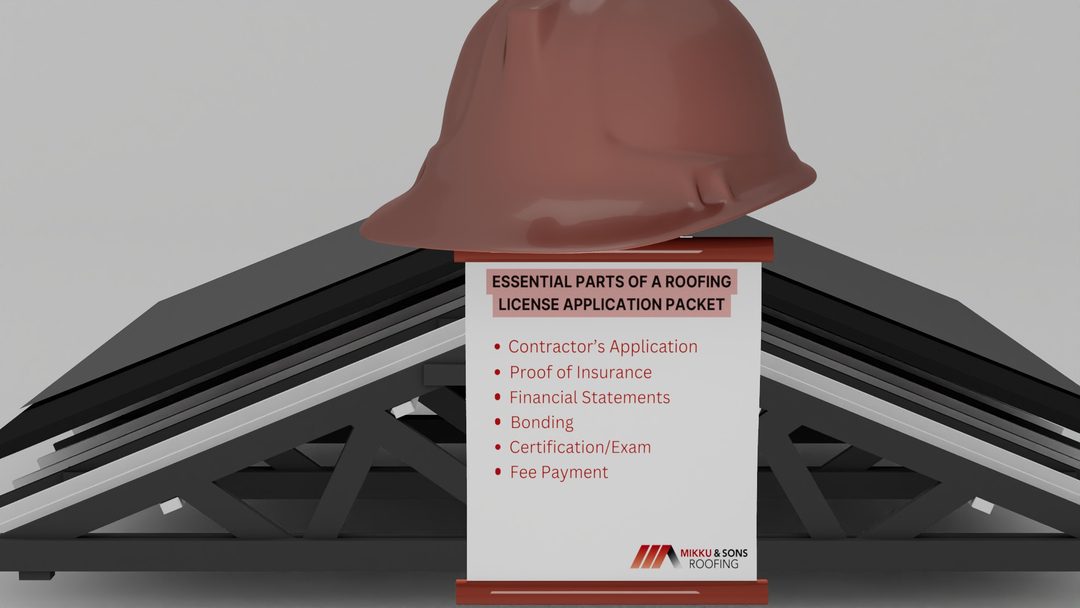
If you're a contractor looking to get your roofing license so you can start working on roofing projects, you need to fill out a roofing license application packet. A contractor's application, along with copies of any necessary documents and the appropriate fee, is usually required. What follows are the most crucial components of a roofing license application.
In order to get the contractor's name and contact information into the hands of the state licensing board, this form must be filled out. You can find the contractor's name, address, phone number, and license number on this document. Also included are the contractor's background and qualifications, as well as any disciplinary actions taken against them.
This certificate shows the licensing board that the contractor has purchased adequate liability insurance to pay for any damages that may arise as a result of the contractor's work. The policy's coverage levels must be at least as high as the state requirements.
The contractor's ability to pay taxes and other expenses is one factor the licensing board considers, so they need to see proof of financial stability in the form of tax returns, profit and loss statements, and balance sheets. With this information in hand, the board will be better able to determine whether or not the contractor has the resources necessary to finish the project.
Bonding is a way of providing the licensing board with assurance that the contractor will complete the job as promised. In the event that the contractor does not finish the job or does not fulfill the terms of the contract, the bonding company will provide financial compensation.
Getting a contractor's license in most states involves passing a certification exam. In most cases, the contractor will be tested on his or her knowledge of roofing techniques and safety procedures.
The licensing board requires all prospective contractors to submit an application fee. The cost can range from several hundred to several thousand dollars, depending on the state in which you live.
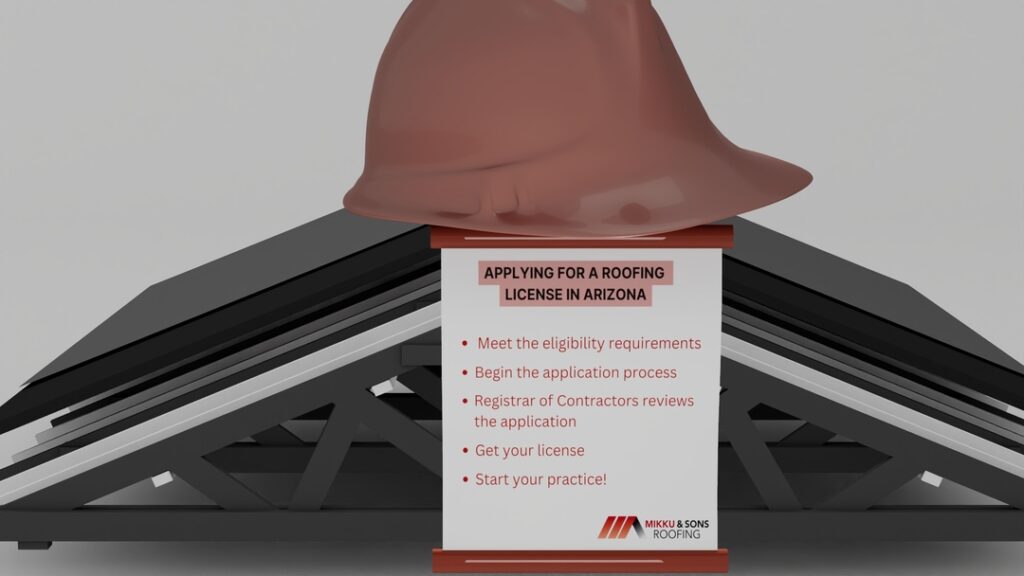
In Arizona, the steps necessary to apply for a roofing license are few and simple. It is necessary to fulfill the state's requirements before applying for a roofing contractor's license. Once that's done, you'll be able to get your license and begin working as soon as possible.
If you are a professional roofer looking to obtain a roofing license in Arizona, you need to meet the requirements set forth by the Arizona Registrar of Contractors (ROC). The process of obtaining a roofing license in Arizona involves completing an application and providing a surety bond.
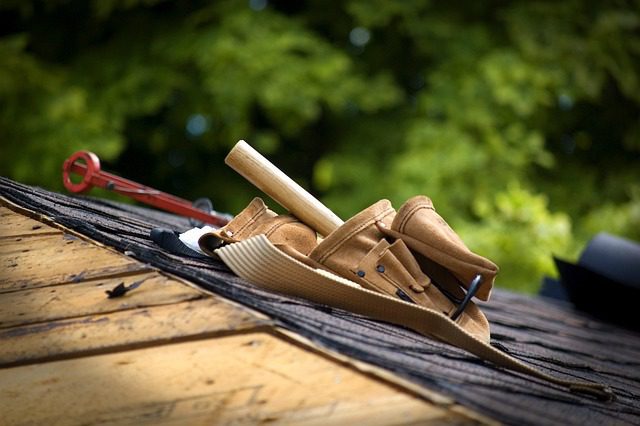
If you want to get a roofing license in Arizona, you’ll need to take the Arizona Roofers Exam. This exam is administered by the Arizona Registrar of Contractors (ROC) and is designed to ensure that roofers in the state have the knowledge and skills necessary to safely and effectively perform roofing work.
The Arizona Roofers Exam consists of two parts: a written exam and a practical exam. The written exam covers topics such as roofing materials, roofing systems, roofing installation, and roofing codes. You’ll need to answer multiple-choice, fill-in-the-blank, and true/false questions on the written exam. The practical exam requires you to demonstrate your skills in roofing installation, inspection, and repair.
In order to take the Arizona Roofers Exam, you’ll need to register with the Arizona Registrar of Contractors. You’ll need to provide proof of experience in roofing or related construction work, as well as proof of completion of the appropriate training courses. Once you’ve been approved to take the exam, you’ll need to schedule a testing appointment and pay the required fee.
Once you’ve passed both the written and practical exams, you’ll be issued a roofing license. This license is valid for four years, at which point you’ll need to renew it. You’ll also need to complete continuing education courses to maintain your license.
Getting a roofing license in Arizona is a major responsibility, and it’s important to make sure you have the knowledge and skills necessary to perform roofing work safely and effectively. If you’re considering becoming a roofer in Arizona, make sure you take the time to understand the requirements for getting a roofing license and take the necessary steps to become licensed.
In order to pass the Arizona Roofers Exam, it’s important to make sure you’re well-prepared. You can prepare for the written exam by studying the topics covered on the exam, such as roofing materials, roofing systems, roofing installation, and roofing codes. You can also find study guides and practice tests online to help you prepare for the exam.
For the practical exam, it’s important to make sure you have the necessary hands-on experience in roofing or related construction work. You can also take courses or workshops to help you learn the skills you’ll need to pass the exam.
Finally, make sure you take your time during the exam and read all of the questions carefully. If you’re not sure of the answer to a question, take your best guess and move on. Good luck!
The visual appeal and market value of your home are directly tied to the color of your roof, making it a difficult decision. The sheer number of possible color combinations can make it difficult to find one that works well with your home's design, the surrounding landscape, and your own personal preferences.
To help you make the best choice, Mikku and Sons Roofing has compiled this article on house and roof color combinations (with examples) to help you learn more about the various roofing colors and how they might look on your property.
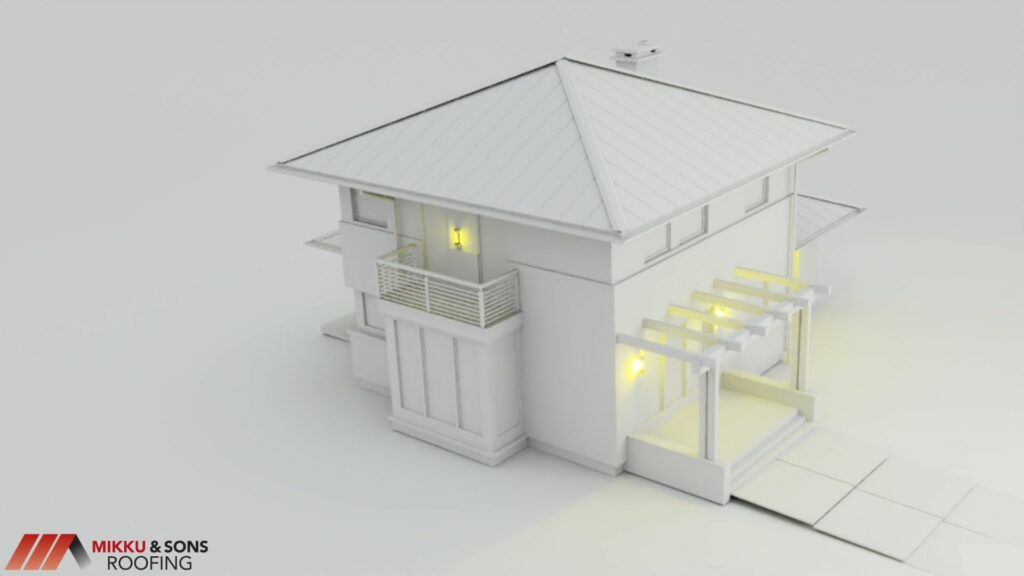
There are a number of considerations that should be made while deciding on a color scheme for your home's exterior and roof. Taking into account these aspects will help you zero in on a color scheme that is a perfect fit for your home and your life.
It's true that different color schemes complement various architectural styles better than others. A house designed in the Victorian style, for instance, may look best painted a deep red or forest green, while a house designed in the minimalist style might be better off painted a neutral color like white or gray.
Colors should be picked such that they go well with the trees, plants, and scenery around your home. White and pastel hues, which reflect heat and make a home cooler, are good options if you live in a very sunny and hot climate.
Darker hues, such as brown or gray, can assist absorb heat and keep a home warmer in cooler climates.
Picking colors that make you happy and at ease will help your home be a true representation of you and your taste. If you're stuck for ideas, browse images of houses painted in various color schemes for motivation.
If you need assistance deciding on paint colors for your house, you can always go to an expert like an interior designer or builder.
Color tones should be taken into account while selecting a roof and siding color for a home. A home's ambiance can be affected by a number of color tone factors.
There are various popular house and roof color combinations that might enhance your home's appearance. These color choices have worked for homeowners and designers.
Each color combination has advantages and downsides. A classic white house with a black or gray roof may reveal dirt and stains more than other colors. While a red brick house with a black or brown roof is classic, it may not fit with certain accent colors.
Your color mix depends on your taste, your home's architectural style, and your surroundings. Choose a color scheme you like and that complements your home's qualities.
Examples of successful color pairings and why they work:
The contrast of a white house with a black or gray roof is a classic and timelessly beautiful sight. The clean white siding serves as a blank canvas that works with any accent color, while the dark roof stands out dramatically.
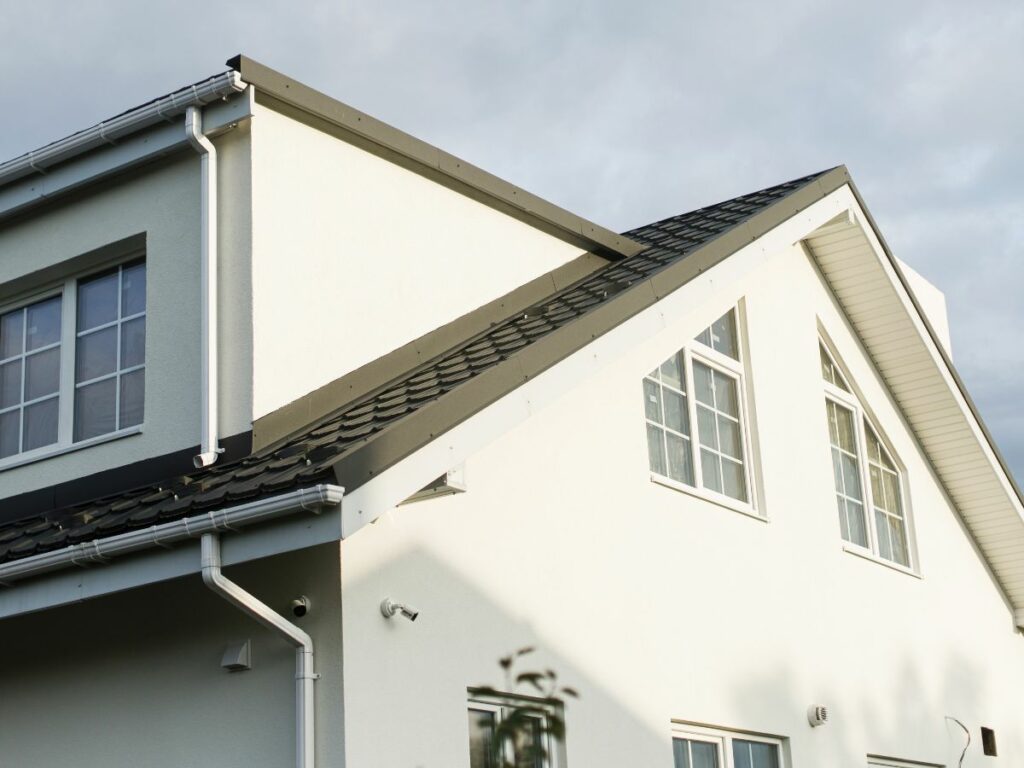
All eyes will be drawn to the stunning contrast between the white exterior and the black or grey roof. It's easy to work with and adaptable to varied color schemes since any building type, from contemporary to classical, may benefit from its clean, elegant design.
Gray is a color that can be used to establish a relaxed and tranquil mood. When combined with a white or black roof, it gives the sleek, contemporary aspect that is so characteristic of today's most sought-after home designs.
The roof's white color and the walls' pale gray serve as a blank canvas upon which to paint any accent color. This color scheme is as adaptable as it is beautiful, and it may be used with a wide variety of accent hues.
A common color scheme for historic residences is a beige or brown exterior with a green roof. The green roof and beige siding help generate a comfortable, homey mood.
This pairing can produce an organic aesthetic that is particularly suited to environments with abundant greenery.
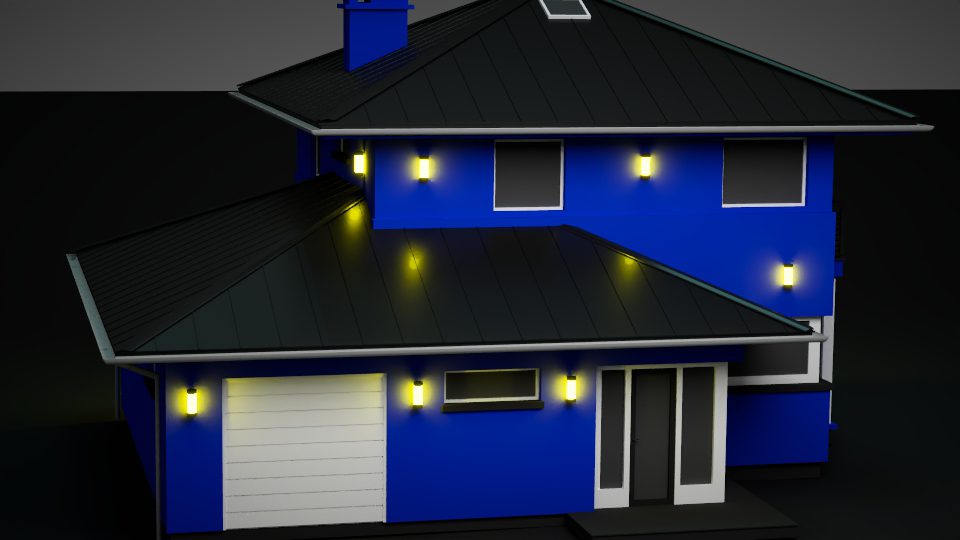
One common color scheme for beach houses is a blue exterior with a gray or white roof. The combination of the neutral gray roof and the soothing light blue cladding is quite soothing.
The color blue spans a wide spectrum, from pastels to dark navy. It can make a space feel more open and airy, making it perfect for coastal areas.
The traditional look of a brown roof over a red brick residence is timeless and charming. There's a cozy vibe thanks to the roof's earthy brown color and the building's red brick front.
Using natural materials like wood or stone in the mix will help you achieve a warm and welcoming classic aesthetic. The combination of this color with a brown roof is a timeless classic.
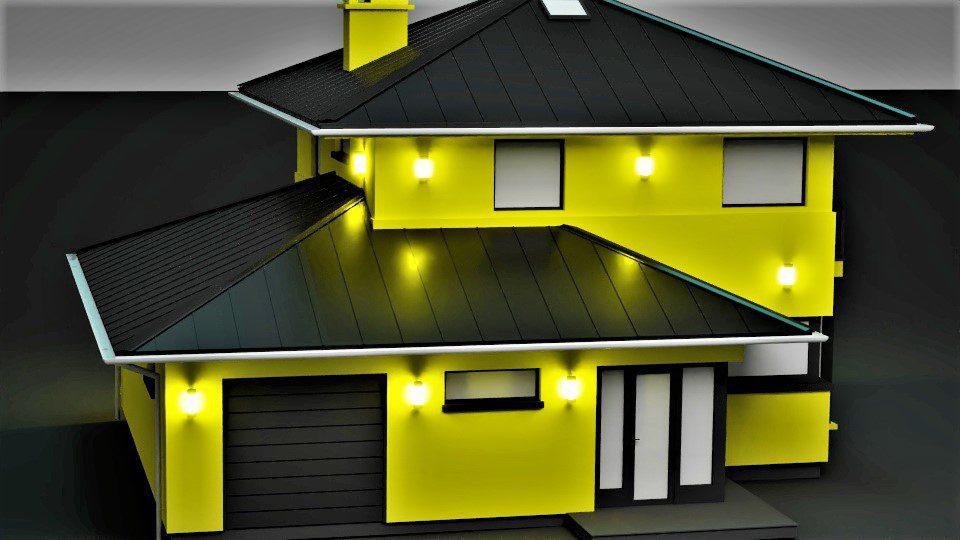
This bright and sunny color scheme is sure to put anyone in a good mood. A house's façade painted a vibrant yellow shade can make it feel more fun and carefree.
Suburban-style homes often feature this color scheme because it produces a warm and welcoming appearance when combined with a brown or black roof.
There is a direct correlation between the roof and siding, therefore it's crucial to have them match. Having a roof and siding that go together effectively can increase your home's curb appeal, making it more desirable to potential buyers or guests.
On the other side, your home's value and curb appeal could take a hit if the roof and siding don't go together well. You may achieve harmony and cohesion in your home's exterior design by using colors and materials that go well together.
When deciding on a color scheme for a project, it's important to consider how the different colors and finishes of each material will interact. Here are some possible combinations of the roofing and siding materials
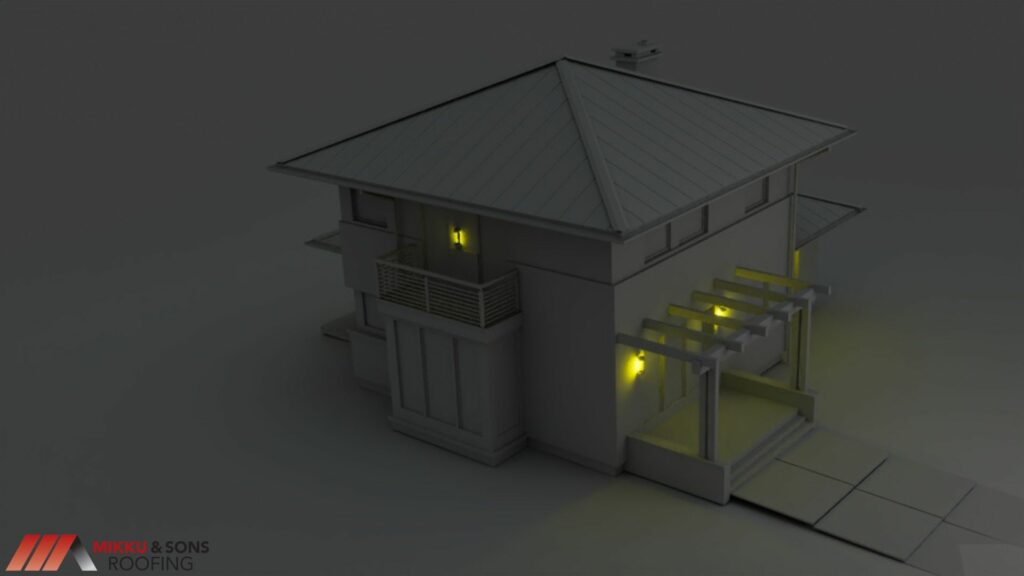
It's not easy to pick out the perfect colors for your home's exterior and roof, but with these tips, you'll have a far better chance of making the proper choice.
Many companies in the home improvement industry now have online color planners that let you upload a photo of your house and try out various color schemes. This might help you see how several colors will look on your house before you commit to a specific paint job.
Although you may have an affinity for some vibrant or unusual color schemes, potential buyers may be put off by them. You should find a happy medium between using colors that you find beautiful and those that will appeal to the largest possible audience.
Color coordination is an art, and these experts can help you learn how to do it right.
In addition, they may advise you on what colors would look best in your home given its specific characteristics and design.
There are color schemes that are more suited to some architectural styles and some climates. A house on the seashore might flourish from using light, cold tones, while a house in the woods might look better with warm, earthy tones.
Color choices for homes in a PUD must be harmonious with the surrounding structures. Homeowners' association regulations may also place limitations on you.
Doors, shutters, and window frames should all be a different color than the siding and roof. Take into account the color of your roof and trim, as well as the color of your siding, while making your decision.
Mikku and Sons Roofing is committed to providing clients with exceptional service and support throughout their roofing projects. Our team of experienced professionals is always available to answer any questions you may have and provide you with the guidance you need to make informed decisions.
We'll work with you to help you choose the perfect roof color for your property, and we'll ensure that your roofing project is completed to your satisfaction. Contact us today to schedule a consultation and start planning your roofing project.
The role of a CEO in a roofing company is to provide strategic direction and leadership, oversee daily operations, and make important decisions that impact the company's success. As the top executive, a CEO is typically responsible for setting goals, developing plans and policies, and evaluating performance.
With such significant responsibilities, it is not surprising that CEO salaries can vary widely, depending on a range of factors. But how much does a CEO of a roofing company make?
According to data from various sources, the average salary for a CEO in the roofing industry is around $80,000 to $98,000 per year. This is, of course, only a ballpark figure; certain CEOs may make much more or much less than the average based on their individual skills and experience, as well as the requirements and goals of their company.
Mikku and Sons Roofing aims to educate on all the parameters of the roofing industry, including how much a roofing company CEO earns. We will therefore explore how much they can expect to make, taking into account the various factors that determine this.
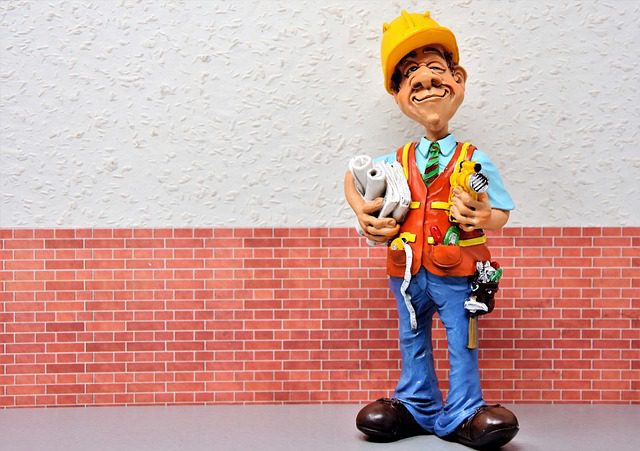
The exact salaries of roofing company CEOs in various states can vary widely depending on a variety of factors. However, according to data from salary websites Glassdoor and Payscale, the average salaries for CEOs in the roofing industry in the top 5 states (based on population) are as follows:
It is worth noting that these figures are just estimates and do not reflect the full range of salaries that a CEO in the roofing industry may earn in these states. Some CEOs may earn significantly more or less than the averages reported by these websites, depending on the specific circumstances of the company and the CEO.
In recent years, the topic of CEO salaries has garnered significant attention and scrutiny. While some argue that these high salaries are justified due to the complex and demanding nature of the role, others believe that they are excessive and not reflective of a CEO's actual contributions to the company.
We will explore the various factors that can impact a CEO's salary and through this analysis, we hope to shed light on the complex and often opaque process of CEO compensation.
Size and profitability of the company
The size and profitability of a roofing company can have a major impact on the salary of its CEO. Larger companies with higher revenues and profits may be able to afford to pay their CEO a higher salary than smaller companies.
For example, a roofing company with $10 million in annual revenues may be able to pay its CEO a higher salary than a company with $5 million in annual revenues. This is because the CEO's responsibilities and level of authority tend to increase with the size of the company, and the CEO's role in driving growth and profitability becomes more important.
Industry and market conditions
The roofing industry is a competitive and fast-changing sector, and the demand for roofing services can fluctuate based on a range of factors, including the economy, weather conditions, and the regulatory environment. As a result, the salary of a CEO in the roofing industry can be affected by the overall health and performance of the industry.
For example, a CEO of a roofing company that is experiencing strong growth and demand for its services may be able to negotiate a higher salary compared to a CEO of a company that is struggling to keep up with the competition.
Location and cost of living
The location of a roofing company can also impact a CEO's salary, as the cost of living and average salaries vary widely across different regions. For example, a CEO of a roofing company in a large metropolitan area with a high cost of living, such as New York City or San Francisco, may earn a higher salary than a CEO of a company in a smaller city or rural area with a lower cost of living.
This is because the CEO's salary needs to be sufficient to cover their living expenses and maintain their standard of living in the location where they are based. According to the Council for Community and Economic Research, the cost of living index for New York City is 195.4 (with the national average being 100), while the cost of living index for San Francisco is 273.9. In comparison, the cost of living index for a smaller city like Omaha, Nebraska is 92.9.
CEO's education, experience, and performance
The education, experience, and performance of a CEO can also play a role in determining their salary. A CEO with a higher level of education, such as a master's degree or MBA, may be able to command a higher salary than a CEO with only a bachelor's degree.
Similarly, a CEO with extensive experience in the roofing industry or in a leadership role may be able to negotiate a higher salary than a CEO with less experience. Finally, a CEO's performance can impact their salary, as companies may be willing to pay a higher salary to a CEO who has a track record of delivering results and driving growth.
How much can a CEO of a roofing company expect to make? According to data from the U.S. Bureau of Labor Statistics, the median annual wage for a CEO in the roofing industry was $115,440 in 2020. However, it is important to note that this figure represents the median wage, meaning that half of all CEOs in the roofing industry earned more than this amount, while the other half earned less.
To get a better idea of the average salary of a CEO in the roofing industry, we can look at salary surveys and other sources of data.
According to Payscale, the median annual salary for a CEO in the roofing industry is $80,000. However, this figure should be taken with a grain of salt, as it is based on self-reported salary data and may not be representative of the entire industry.
PayScale estimates that a CEO of a small roofing firm (one with fewer than 50 employees) may expect to earn an annual income of $101,846. For CEOs of medium-sized roofing companies (50-99 people), this amount rises to $119,398 annually, and for CEOs of large roofing companies, it rises to $147,866 annually (100 or more employees).
Glassdoor is a job and salary marketplace where users can post anonymous salary histories and receive salary statistics from other users. Glassdoor reports that the typical compensation for a CEO in the roofing sector is $98,000 annually.
However, it's important to note that this estimate relies on a relatively small sample size and so might not be representative of the whole.
According to data from Salary.com, the average salary for a CEO with a bachelor's degree in the roofing industry is $119,998 per year, while the average salary for a CEO with a master's degree is $131,482 per year. Salary.com reports that the median annual salary for a CEO in the roofing industry is $85,447, based on self-reported salary data.
The education and experience of the CEO can also impact their salary in the roofing industry. Those with advanced degrees or extensive experience in the field may be able to negotiate higher salaries due to their expertise.
Overall, the average salary of a CEO in the roofing industry can vary widely depending on the size of the company, the location, and the CEO's education and experience. Understanding these factors can help both employees and stakeholders get a sense of the expected salary for a CEO in this industry.
It is worth noting that these figures are just estimates and do not reflect the full range of salaries that a CEO in the roofing industry may earn. Some CEOs may earn significantly more or less than the average, depending on the factors discussed earlier, such as the size and profitability of the company, industry and market conditions, location and cost of living, and the CEO's education, experience, and performance.
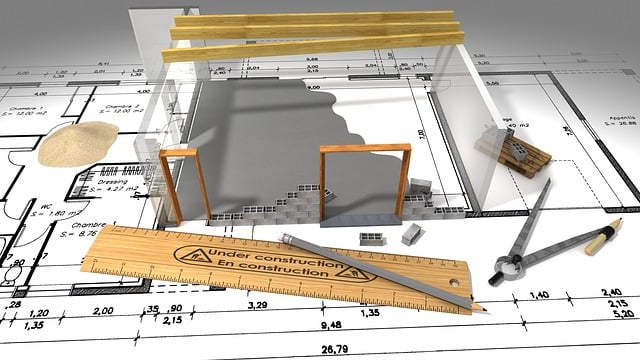
As the head of a company, a CEO has the potential to earn a significant salary and enjoy a high level of earning potential. However, there are a number of factors that can impact a CEO's earning potential.
By understanding these complex and multifaceted factors, we can gain insight into the CEO compensation process and these top executives' earning potential. While many factors can impact a CEO's salary, there are also several things that a CEO can do to increase their earning potential.
Here are a few:
A CEO's ability to negotiate their salary and benefits package can have a significant impact on their earning potential. This may involve leveraging their education, experience, and performance to negotiate a higher salary, or negotiating for additional benefits such as stock options or bonuses.
Some key factors that can affect a CEO's negotiating skills include their ability to communicate effectively, their knowledge of the industry and market conditions, and their ability to persuade and negotiate effectively.
The willingness of a company to pay a competitive salary to its CEO can also affect the CEO's earning potential. Companies that are willing to pay top dollar for top talent may be more likely to attract and retain top executives, while companies that are unwilling to pay competitive salaries may struggle to attract and retain the best talent.
This can be influenced by a range of factors, including the company's financial situation, its priorities and goals, and its overall culture and values.
A CEO's ability to drive revenue and profits can significantly impact their earning potential. A CEO who is able to drive growth and increase profits for the company is likely to be more valuable to the company and may be able to negotiate a higher salary as a result.
This can involve implementing strategic initiatives and plans that drive growth, maximizing efficiency and profitability, and making smart business decisions that benefit the company. Some key skills that can help a CEO drive revenue and profits include financial acumen, strategic thinking, and leadership skills.
The roof is one of the most vital aspects of the house’s exterior. Offering a protective value, it also contributes to the overall aesthetic appeal of the building. The roof is one of the things people see when approaching the house. As such, many homeowners spend quality time and thoughts on making a roof. And that is where the job of a roofing estimator comes in.
Roofing estimators are professionals that provide roofing estimates and oversee roofing activities for building projects. This profession is usually needed for large building projects in the past. However, its popularity has recently increased due to every building owner wanting the best for their properties and hiring professionals to take charge of different aspects of the construction. This has made finding a job as a roofing estimator more seamless. You can easily land projects by clicking on Jooble on the internet.
As easy a job as being a roofing estimator seems, it is an important job that requires focus, conciseness, and adequate training. However, many people do not know what it takes to become a roofing estimator or what duties are required.
In this regard, we have collaborated with experts from job aggregator Jooble to research the job of a roofing estimator. We will discuss what you need to become one and what the responsibilities of a roofing estimator are.
Contrary to what may be believed, roofing estimators work in the office and use a computer to execute most of their jobs. Although they travel to sites, it is minimal as it is only to measure, take photographs of the building and inspect.

Some other things roofing estimators do are:
The job of a roofing estimator is both technical and mental. Therefore, it requires both education and skills. Also, getting licensed in the state you practice can help you gain a better footing.

Below are the basic requirements to work as a roofing estimator:
A Bachelor’s degree is the minimum education required to become a roofing estimator. You must get a bachelor’s degree in construction, quantity surveying, or other related fields. You need a high school diploma to get into a university, and it usually takes four to five years to get a degree in construction-related courses.
In addition, you should take classes in technical drawing and mathematics, so an excellent background knowledge in those subjects is essential.
Being a roofing estimator requires both soft and technical skills. Soft skills are needed to navigate the nuances of the business relationship, while hard skills are necessary to do the job itself. However, no skill is superior to the other because a failure in one part will likely put dampness in the other.
Soft skills are personal attributes that enable people to interact and navigate harmoniously with people. For example, a roofing estimator needs soft skills like communication, human relations management, organization, and time consciousness.
Communication is vital because roofing estimators will have to relate their estimates and work to people, including the house owner and the builders. Therefore, a roofing estimator must have good written, verbal, and visual communication skills.
Human relations management is essential in roofing estimation as a roofing estimator will likely have to work with people often. Knowing how to manage different people will make their work go smoothly and help them avoid crises.
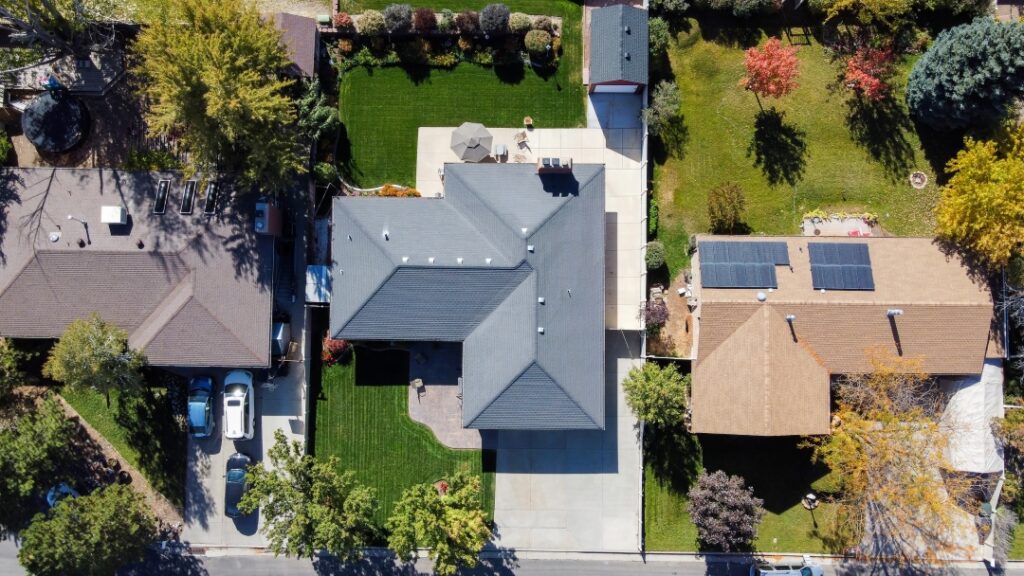
The job of a roofing estimator involves the measurement and collation of data. Therefore, organizational skill is vital to prevent issues arising from mix-ups. Also, roofing estimators travel with objects that may be dangerous if used wrong. Therefore, a roofing estimator must know how to organize his bags to not cause problems.
More so, many people are waiting for a roofing estimator’s job output before starting their own work. Therefore, you must finish within the deadline given. Technical skills, such as mathematics and AutoCAD proficiency, are also crucial for roofing estimators.
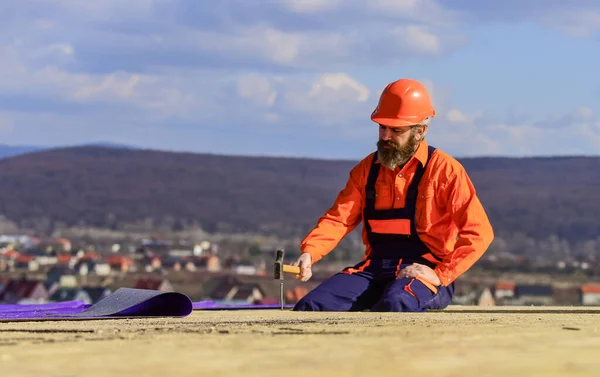
Roofing estimation requires no formal training, but you must be experienced. Most employers prefer candidates with at least five years of experience. Some may require as many as ten years.
However, the good news is that the experience does not necessarily mean you need to gain it working as a roofing estimator. You can start by interning as a quantity survey assistant. You can also get a job in construction labor, roofing installer’s assistant, or carpenter’s assistant.
Certification is proof of your professionalism and competence. It builds more faith in your brand, allows you to get high-end clients, and allows you to negotiate better pay.
While you do not necessarily need certificates to work as a roof estimator, the more you grow, the higher the requirement. It is, therefore, advised that you get at least one certificate. Some of the best certifications for a roofing estimator are:
The CCM is a construction certification course that is offered by the Construction Manager Certification Institute (CMCI). The certification has been available for more than 25 years, and it is highly revered as it has certified more Construction managers than its counterparts in the industry.
To get a CCM certification, you must have a 2 or 4 years degree with at least 4 years of active responsible-in-charge experience. You can also get it with eight years of field experience with 48 months of responsible in-charge experience.
You can start your application by sending a mail containing your application. However, it will not be processed if all the documents are incomplete. Also, you must provide references from two clients.
The Engineering In Training (EIT) certification is obtained after passing the NCEES Fundamentals Of Engineering Exam. You also have to get a degree from an ABET-Accredited university.
OSHA certification is a program from the Occupational Safety And Health Administration (OSH). OSHA has different certification programs, and they are all assessment based.
We have certified Estimating professionals, also known as Certified cost Professionals. This certification is for advanced professionals.
A roofing estimator job is a highly technical job that requires some soft skills to thrive in it. Although roofing estimator jobs are not so much, they pay well. However, you need skills and education to snatch the available positions, as the competition is high.
This article has discussed, in advance, some of the things you need to put in place to get the job of a roofing estimator.
Unlike other roofs, a composition roof is made of reinforcing mats and mineral fillers, making it much sturdier. If you’re considering which option is best for you, read on to find out why you should invest in a composite roof.
In this article, we’ll answer the following questions
A composition roof is one of the most common roof types used on modern buildings.
Composite roofs are made of shingles consisting of fiberglass with reinforcing mats made of asphalt and fillers to make the roof sturdier. Unlike traditional asphalt roofs, composite roofs last longer and are more robust.
Yes, composition roofs are an excellent choice. They last much longer than traditional roofs, with a lifetime of up to 50 years. They are also more cost-effective, as while you’ll pay more in the short term, a composite roof lasts far longer than any other type.
Composite roofs also look sleek, and because of the variety of materials used, you can customize your roof to your individual home and tastes.
The lifetime of a composition roof depends on the materials you opt for and the quality of the roofer you hire. Typically, composite roofs, on average, last for 30 years, but if installed and cared for correctly, they can last for more than 50 years (depending on the type of material. Also, a 50-year roof may only last 40 years.
Note: If you have used a previous roofer who did not install your roof to a professional standard, you can sue in small claims court. You can also get in touch with us to see if we can remedy the situation.
Care for your composite roof by removing overhanging branches that might damage your home, regularly inspecting and cleaning your roof, and checking for potential leaks. By doing this, you’ll likely extend your roof’s life significantly.
Asphalt and composition shingles are essentially the same things, except the term ‘composition’ refers to using a composite fiberglass mat and asphalt or minerals. In comparison, asphalt shingles are made from one material—most modern shingles made in the US use mats made of fiberglass.
Because a composite roof is made of multiple materials, it often has a unique appearance compared to other types of roofs.
Composition roofs are made up of shingles containing various materials like wood, slate, and laminate. This means that composite roofs can look far different from one another.
Because composition roofs contain multiple materials that permeate the tile, they won’t fade as quickly as other roofs, such as metal or wooden shingles that are only colored with surface-level paint.
However, your composite roof will likely start to fade after ten years without proper care and attention. Regularly maintain your roof by cleaning and scrubbing the tiles to avoid this. We recommend doing this yearly to prevent your roof from looking weathered and damaged.
There are three types of composite roofs to choose from, each with its own benefits. These are:
For those with a smaller budget, 3-tab shingles are the cheapest choice. This roof type earned its name because of the vertical slots slotted into part of the shingle.
3-tab shingles cost less to install, making them a suitable choice from a budget perspective. However, they don’t have as long a lifespan as other composite roof types. They also have shorter repair warranties and a higher chance of mold because of the moisture that builds up within the roof.
3-tab shingles are also not built for harsh weather conditions like wind and storms. If you live in an area where the weather can be intense, we don’t recommend this type of composite roof.
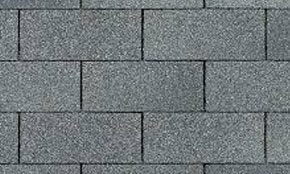
Composition architectural shingles, or dimensional shingles, are currently the most popular roof option. While they cost more than 3-tab shingles, they’re less expensive than premium-level composite roofs.
Dimensional shingles are more attractive than other types, with a variety of colors and shingle styles to choose from. They also have a far more extended warranty than the 3-tab, with some coming with up to a 50-year warranty.

Unlike the 3-tab roof, composition architectural roofs can withstand much harsher weather conditions such as high winds and storms, making them a far more durable product.
Although these types of roofs cost more, they’re worth it for the increased warranty, durability, and design.
If you have the money to spend, premium composite shingles look impressive and have a longer lifespan than other types of composite roofs.
Because of their larger size and weight, premium composite shingles are more resistant to extreme weather conditions and come in various colors, materials, and styles.

While premium tiles are significantly more expensive, they come with more extended warranties, so your new roof is guaranteed to stand the test of time.
Composite roofs are the most popular option on the market for a reason. They’re attractive to look at and can withstand harsh weather conditions, and last up to 30 years longer than other types of roof available.
If you’re actively looking for a new roof, we’d recommend the composition architectural shingles because of their durability and design while still being affordable. However, if you have a smaller budget, 3-tab composite roofs are still a cost-effective option and will likely last longer than other types of roofs available to you. For expert roof replacement and repairs in the Phoenix area, talk to us today by calling 623-465-1068 or chatting to one of the Mikku and Sons team online.
A roofing salesperson receives between 8% and 12% of the total collected, depending on commission structure and administrative charges, despite the fact that there are additional variables to consider, the majority of which will be covered below.
How much commission does a roofing salesman make? A roofing salesperson often receives between 8 and 12 percent of the total amount collected, depending on your compensation plan and administrative charges.
First, we need to understand the two types of commission structures. We have commissions that are based on either:
Here’s the difference.

The top-line figures are referred to as the percentage of sales. I'll use round numbers to demonstrate this in the example below. They are preliminary estimations that do not match industry standards. Keep in mind that these norms vary depending on the market, the industry, and the profit margin goals of each organization. So, we'll just use some arbitrary approximate figures here.
As an example, let's say I sell a $10,000 roof. That is the contract price of $10,000. The percentage of sales will often range between 7 and 12%. Assume it's 10%. In this situation, the commission would be $1,000. A $1,000 commission on a $10,000 contract? Done.
Why is this % range present? Two factors:
Typically, percentage-of-profit commissions range between 30 and 50 percent. Now, if you're a (n):
I would suggest that you not pay 50%. This is due to the corporation's massive responsibility for this installation. I've discovered that when a higher commission is paid, the majority of enterprises fail. I wouldn't do it unless the person is a high-volume producer.
When you are paid a percentage of sales, you must constantly focus on recruiting new customers. To receive your commission, you must make as many sales as possible. This is how you should approach the situation because the salesperson will be exclusively accountable for generating new revenue through contract signing.
The assignment is then frequently assigned to a production team, which meets with the adjuster. The labor order, manufacturing, and augmentation will be handled by someone else.
If you are compensated based on a proportion of gross sales, you should pursue volume. Do the math if you want to earn $100,000 every year. To earn $100,000, you would need to sell one million dollars.
To illustrate the operation of percentage-of-profit commissions, I will utilize the same $10,000 contract. After making a sale, the majority of roofing firms will deduct an "overhead percent."
This ranges between 10 and 15 percent. This is the cost of maintaining office lighting, employing office personnel, and purchasing liability insurance. This includes the internet bill, administrative employees, phone lines, the internet, and marketing costs, among other things.
Therefore, we will deduct 10 to 15% for overhead. That is typical and expected. If overhead is 10%, that would be $1,000. Now, we're down to $9,000.
From the $9000, we will need to cover all expenses, including labor and materials, permits, and anything else related to constructing the roof. If everything costs $6,000 (again, these are just arbitrary amounts), we would be left with $3,000.That's a profit of $3,000. I will utilize 40% of the range between 30% and 50% for this percentage commission. That would be a commission of $1,200.
A commission structure specifies how corporations compensate their sales staff in the sales sector. Various sales commission models result in varying levels of remuneration.
Commissions may be paid weekly, bimonthly, or monthly. Most are paid at the end of the period, but some may be delayed if employers must wait for client payments before paying you.
Importance of an effective commission structure
Fairness and accuracy are important concerns for businesses when developing a successful commission structure. Sales employees who believe they are being adequately compensated are more inclined to stay with a company rather than leave for greater chances.
Effective arrangements contain a good blend of wage and commission and quotas that may be met. How a firm compensates its salespeople can impact profitability while attracting and retaining the greatest sales force.

Businesses use a range of sales commission models depending on their services or products. The following are the nine most prevalent structures
Sales personnel are paid hourly or flat compensation under the base rate-only scheme. This incentive system is advantageous for firms when salespeople spend a significant amount of time educating and helping customers both before and after the sale. There is no motivation to upsell or sell additional goods or services.
For instance, the company's four salespeople each get $1,250 every week, regardless of how many sales they generate. Because no commission is paid, no calculation is required.
2. Base salary plus commission
It pays salespeople an hourly or fixed base income plus a commission rate. The base wage is frequently too little to cover someone's whole income, although it does give a fixed income when sales are poor.
The typical salary-to-commission ratio is 60:40, with 60% being base pay and 40% being commission-based. The plan works best as an incentive or motivation to improve sales performance.
Example: A salesperson earns $500 per month in salary plus a 10% commission on sales of $5,000 or more. If he sells $20,000 in one month, he will make $2,500: $500 in salary and $2,000 in commission. Commission calculation with merely the base rate:
Commission Total = Commission Percentage x Amount Sold.
3. Draw against a commission.
In order to help new hires get used to their sales duties without causing a dip in income, the commission draw plan is based on early payment or draw. It incorporates aspects of both the commission-only and the base salary plus commission structures. The more you sell, the more commissions you earn.
Sales agents are paid a monthly income or draw, regardless of sales volume. If they make less in commission than they do in pay, they keep the commission as well as the difference. The monies are considered forward payments until commissions equal or surpass the salary drawn.
Employers must eventually be reimbursed for these upfront payments. Only when commission totals exceed the draw amount does the salesperson benefit.
Example: A salesman is supposed to make $4,000 in commission and $2,000 in draw per month. If they reach their $4,000 target, they will receive an additional $2,000, the amount over the draw. If they only earn $1,000, they owe the firm $1,000, which is the amount of the draw.
Draw commission is calculated as follows:
Commission Total - Draw = Commission Owed.
4. Gross margin commission
The gross margin commission model accounts for the costs of the products being sold. The salesperson is paid a percentage of the profit. Salespeople are less likely to cut corners because their pay is based on the final cost of the sale. The more money they can make by upselling a product or service.
Assume a salesperson is selling a $100,000 automobile that costs $60,000 to produce. The gross profit margin is $40,000 each year. The salesperson is paid 5% of the profit margin, which amounts to $200.
Calculating the gross margin commission:
Total Sale Price - Cost Equals Gross Margin Gross Margin x Commission Percentage Equals Total Commission.
5. Residual commission
The residual plan benefits salespeople who have repeat customers or clients. Commission payments will continue indefinitely as long as accounts generate revenue. Salespeople are pushed by the framework to retain or acquire repeat customers. This structure is especially common in long-term account agencies and consulting firms.
An insurance salesperson, for example, wins a large account. The salesman receives a 5% commission, or $150 per month, as long as the corporation pays its $3,000 monthly premiums.
Calculation of the remaining commission:
Payment x Commission Percentage = Total Commission.
6. Revenue commission
When determining commission rates, companies that are more concerned with wider company goals than overall profit sometimes adopt the revenue commission model. Top sales performers are sales reps who get a predetermined percentage of the income they create.
For example, a car salesperson earns 3% of the sale of a $25,000 automobile. For such a sale, they receive a revenue commission of $750.
Revenue commission calculation:
Total Commission = Sale Price x Commission Percentage.
7. Straight commission
Straight commission salespeople only make money when they make a deal. There will be no money if no sales are made. Because there is no base income, the corporation may give greater commission rates, which generally attracts the finest salesmen. The straight commission structure allows salespeople to work as independent contractors, setting their own hours and saving organizations money on taxes, benefits, and other expenses. The company only loses money when the salesman really brings in money.
For instance, a telemarketer who promotes holiday condo rentals makes $150 for each booking. The more time spent on the phone, the more likely it is that a transaction will be made.
Straight commission calculation:
Sales x Commission Rate = Income.
8. Tiered commission
Salespeople in the tiered commission model earn a set percentage of commission on all sales up to a specified amount. When they reach their revenue target, their commission grows. This motivates them to outperform their sales targets and close more agreements.
For instance, a salesperson's basic compensation is 5% up to $100,000 in sales. For total sales between $100,000 and $200,000, the commission rises to 7%. Any sales in excess of $200,001 earn them a 10% commission.
9. Territory volume commission.
Salespeople in this strategy are paid depending on the fixed rate for their defined region. The amount of remuneration is usually determined by territorial volume, in which sales figures are tallied, and commissions are divided evenly among salespeople in the region. This pay plan only applies to sales professionals working in a team environment.
Example: Two salespeople are supposed to sell $50,000 in merchandise in a 100-mile radius each month. One sells $30,000, while another sells $20,000. They divided the 10% commission, receiving $2,500 apiece because the overall target was accomplished.
The territorial volume commission is calculated using a variety of parameters based on the company's sales algorithms. A quick calculation would be:
Total Sales x Commission Percentage divided by Total Salespeople = Commission per Person.
One of the most significant things a company can do for its sales operation is to define its commission structure. What works best for one company may not be the ideal solution for another. Here are some pointers for determining the best commission plan for your business:
Sales often have a high turnover rate, so don't hesitate to experiment with alternative incentive schemes. What was motivating five years ago may no longer be motivating today's sales teams.
The average monthly salary for a Roofing Sales Representative in the United States is $6,664 as of September 5, 2022. While ZipRecruiter reports monthly earnings as high as $11,250 and as low as $1,625, the majority of Roofing Sales Representative salaries in the United States now vary from $4,958 (25th percentile) to $8,041 (75th percentile).
A Roofing Sales Representative's average salary range varies substantially (up to $3,083), implying that there may be several prospects for promotion and increased income based on skill level, location, and years of experience.
Roofers in the United States earn an average of $23.90 per hour and $6,375 per year in overtime. 3.1k salaries were recorded as of September 9, 2022.
In the roofing industry, typical roofing companies earn between 20% and 40% gross profit. The number for service-oriented businesses could be higher, while the number for new development and major commercial businesses could be lower.
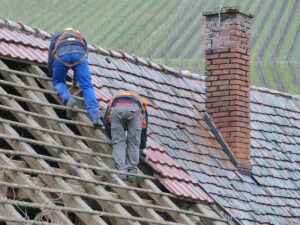
The work of a roofer requires considerable physical strength and stamina. It takes fortitude to keep one's footing and move confidently, whether standing, climbing, or walking in temperatures above or below freezing, in heavy winds or snow, or in the pouring rain. Roofing contractors ensure that their clients' facilities are secure for any employees or valuables housed therein.
40% of global greenhouse gas emissions can be attributed to the built environment, which is a very concerning figure. It uses one-third of the world's resources and produces millions of tonnes of garbage annually.
Changing to a more sustainable way of living is not an easy decision, and it requires time. If you're a homeowner concerned about your home's environmental impact, using the most eco-friendly roof would be one of the options on your table.
It's safe to assume that if you're interested in green roofing materials, you've already taken steps toward a more sustainable home and way of life. Here is a rundown of which type of roofing has the smallest carbon footprint and why.
The carbon footprint of a roof is the entire amount of greenhouse gases (GHG) emitted by the roof expressed as carbon dioxide equivalent (CO2e). The carbon footprint of a roof is determined by the direct or indirect carbon emissions involved with the manufacture of the roofing materials to their installation on the roof.
Life cycle analysis (LCA): Why it is important
Decision-makers can use LCA to evaluate competing products such as roofing materials and choose the one with the smallest environmental footprint. By considering all aspects of a product's life cycle, LCA prevents burden shifting, which would lessen the environmental impact in one area while raising it in another.
LCA evaluates the entire lifecycle of a product, beginning with its raw material extraction and ending with its final disposal. It's a way to measure the cumulative effects of a product, process, or action on the environment.
LCA pinpoints environmental problem areas in products and materials and provides a baseline for future improvements. Examining the few criteria that qualify it as a roof with a small carbon footprint is necessary for determining which roof has the lowest direct or indirect carbon emissions.
It is important to consider a number of aspects when choosing a roofing material to minimize its effect on the environment. These include:
| Material | Embodied Energy (MJ/Kg) |
| Copper | 44-55 |
| Aluminum | 155 |
| Clay tiles | 6.5 |
| Concrete tiles | 1.2 |
| Ceramic tile | 18.9 |
| Slate | 0.1-1 |
| Steel – corrugated sheet | 79.6 |
| Clay brick | 3.5 |
This is the amount of energy needed to extract, process, and transport the material and deal with waste produced during production. Energy is consumed throughout the construction process, from mining and processing raw materials to the production of building supplies, distribution, and, ultimately, construction itself.
If you want to cut down on your home's energy use and your carbon footprint, you should learn about and factor in embodied energy while making decisions concerning construction or renovation.
Aluminum roofing raises a few eyebrows since the embodied energy varies greatly with different manufacturing methods. Aluminum, which is manufactured in vast quantities through electrolysis, is an example of a material that would have been considered environmentally unfavorable in the past.
Since most of its production relies on hydroelectric power, the amount of energy required to make it is quite small. It's a great sustainable roofing alternative because it lasts a long time and can be recycled when it's done.
| Material | Life expectancy |
| Clay tile | 50 to 100 years |
| Concrete tile roofs | 40 to 75 years |
| Cedar shakes/shingles | 20 to 40 years |
| Composite shingles or tiles | 30 to 50 years |
| Slate | 30 to 100 years |
| Fiber cement shingles | 20 to 30 years |
| Tin | Over 50 years |
| Ribbed metal (with exposed fasteners) | 25 to 40 years |
| Ribbed metal (with concealed fasteners) | 30 to 40 years |
| Standing seam | 30 to 50 years or more |
| Copper and zinc | 100 years or longer |
| Premium asphalt shingles | 20 to 30 years |
| Architectural/ dimensional asphalt shingles | 15 to 25 years |
| 3-tab shingles (properly maintained) | 10 to 20 years |
This is a material's ability to withstand its intended environment throughout its predicted lifespan without incurring damage or requiring excessive care. Over the product's service life, you should calculate its total cost and environmental impact; the lower those numbers will be, the more durable the product is expected to be.
Clay tiles are eco and style-friendly choices for your house. They come in a multitude of colors and styles that you can use to accent or complement your house. Clay tiles are energy efficient, allowing heat to circulate rather than just trapping it, which can lower your energy bill in regards to cooling in hot regions or in the summer months.
Also, while these tiles aren't particularly cheap to install, they are easily replaceable when damaged, meaning there isn't much chance you'll ever need to do a full replacement, only minor repairs and touch-ups throughout the life of your rooftop. Before you invest in these tiles, you'll want to have an inspection done to make sure your roof can handle the weight, additional support structure may need to be added in some cases.
In most cases, the overall savings you'll get with this tile over the long run will likely offset the costs of any work needed.
Boye Fajinmi, Co-Founder and President, TheFutureParty
Recycling refers to reprocessing waste into useable products, while reclamation refers to the process of reclaiming something that had been discarded as useless. Some materials may be recycled more simply than others, and there are recycling centers where they can be sent again for use.
A product's recyclability can be influenced by its design in a number of ways, including the materials used and the degree to which it is constructed in modular parts. The metals steel and aluminum, for instance, can be recycled repeatedly.
If you are environmentally concerned, you can opt for recycled shingles. They can be a green roofing product and are quite affordable. These shingles are perfect alternatives to expensive slate roofs. They are durable and can last for over 50 years.
These roofing materials also help the home use as little energy as possible. These types of roofs can help you save on your monthly bills. Their simple design will allow you to use fewer materials. Such is beneficial to the environment. Most raw materials are organic, sustainable, and eco-friendly. They can reduce waste and carbon footprints. Something that is vital in creating a better world for future generations.
Laura Martinez, Consultant and Content Writer, PersonalityMax
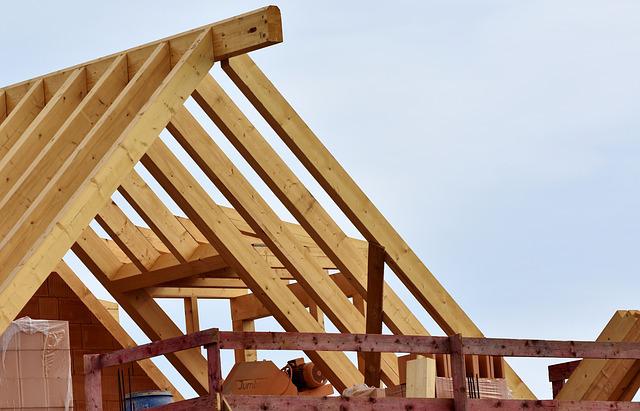
The quest for eco-friendly substitutes has been strong for quite some time. Due to global warming and the subsequent need for improved materials that can endure the destructive elements of nature, the demand for sustainability has skyrocketed.
If a green or living roof is the extent of your knowledge about sustainable roofing, you may be shocked to learn of the many other options available, even with the current roofing options.
Most contemporary homes have asphalt shingles on their roofs. They may be fixed or replaced with little effort and cost little money.
When most people think about asphalt shingle roofing, the phrase "environmentally friendly" is hardly the first thing that springs to mind. Recently, there has been a shift in residential construction toward eco-friendly and sustainable practices, likely as a result of rising public awareness of international issues.
As a byproduct of refining crude oil, asphalt is not the most eco-friendly or long-lasting option. What makes asphalt shingle roofing eco-friendly is often overlooked, even though it is one of the more widely used eco-friendly home components.
You don't have to worry about your old asphalt shingles being dumped in a landfill if you're planning on repairing your roofing system. This is because, with the help of innovation, asphalt shingles may be reused and recycled.
Approximately 11 million tons of asphalt shingle trash is generated annually in the United States, according to the Environmental Protection Agency (EPA). The tear-off procedure for asphalt shingles generates ten million tons of garbage annually, all of which homeowners generate, while the other million are scraps from making the shingles themselves.
Asphalt shingles are not commonly recycled and are not biodegradable, although they are used by some businesses and governments anyway. Materials such as fiberglass, tar, and other petroleum byproducts are combined with paper and minerals to create these.
Considering their dependence on petroleum, they cannot be considered environmentally friendly. The fact that they are derived from fossil fuels makes them unsustainable, and they also have a disintegration time of up to 300 years as well.
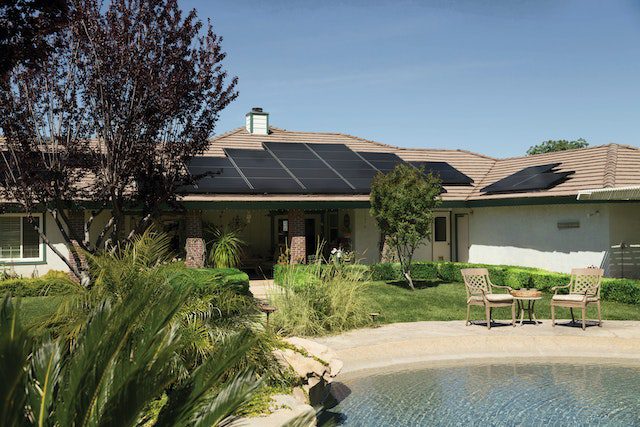
Solar panels are constructed using non-hazardous materials (aluminum, glass, and sand) and have a clean production process. Roofing materials that can be used to generate solar energy include solar panels and tiles.
To generate power, solar roofing systems rely on the sun's rays. It's a green roofing material that can significantly reduce your monthly energy costs.
They both produce no emissions since they use clean, renewable energy sources like the sun. Because of the sun's importance in solar energy production, this type of roof is practical only in sunny climates.
Unlike solar panels, which can be installed on any old roof, solar tiles feature solar cells embedded in more conventional roofing materials like asphalt shingles or metal, which adds up the final carbon footprint of the entire roof from the different materials.
They can also be recycled after they wear out. Glass, metal, and electronic waste recycling are all well-established sectors that may easily handle solar panels and other components of solar power systems.
It is, however, highlighted that the environmental costs associated with producing solar panels may be significant since caustic chemicals like sodium hydroxide and hydrofluoric acid are used in the fabrication process, along with water and energy, the generation of which contributes to greenhouse gas emissions.
Some other roofing methods we have discussed won't work if your home or building has a flat or low-sloped roof. Membrane roofing is a popular option for homes with flat or low-sloped roofs.
EPDM, a synthetic rubber sheet, is widely used to produce roofing membranes. It's sturdy, cheap, light, and simple to set up and fix if something goes wrong. The taped or glued seams mean it only has a 5- to 15-year lifespan and leaks easily.
Membrane roofs are vulnerable to tears because they are so thin, and they are vulnerable to leaks which can occur anywhere, including at the joints where individual membrane sheets are joined.
Roofing membranes made of PVC and TPO are more expensive but last longer than other types. Hot-welded air seams on single-ply roofing membranes make them nearly twice as durable as EPDM rubber, but these membranes are also more expensive to install and buy.
In comparison to PVC, TPO, and asphalt roofs, EPDM roofing has a smaller impact on the environment. EPDM's Global Warming Potential (GWP) is only 6.93 kg CO² per square foot.
While metal roofing isn't usually considered a "green" option, it could end up saving you money and reducing your carbon footprint in the long term. Metal roofs are increasing in popularity due to their many practical advantages and their ability to lessen an individual's impact on the environment.
Traditional roof tiles offer inadequate protection from the elements and heat loss, leading to soaring utility bills. However, metal roofing leaves hardly any carbon impact, can last twice as long as tiles, and is more energy efficient.
The carbon footprint of metal roofing
In recent years, the environmental impact of each roof choice has been a major factor in the decisions of both big businesses and domestic property owners alike. Metals are, however, a great choice for an environmentally friendly roof.
Metal roofing is not only recyclable at the end of its life but also constructed from recycled resources. The time and energy spent mining for raw materials to make this action greatly cuts down new products.
Moreover, it can help cut down on trash that ends up in landfills. Shingles take up to 300 years to degrade in landfills than metal roofs.
The fact that metal roofing is a sustainable, eco-friendly alternative with a very low carbon footprint over the course of its lifetime is one of the most significant advantages associated with making that choice.
Unlike asphalt shingles, metal roofs can be recycled easily; some even contain as much as 40 percent recycled content in their compositions. When the time comes to replace the roof, the metals employed in its construction can be recycled again.
Since metal can be recycled so easily, the mining and processing of new materials release less carbon dioxide. Very little trash is left over, even after a metal roof has been in place for fifty years.

Metal roofing is widely regarded as the most eco-friendly and long-lasting option. Metal roofing may be recycled indefinitely and typically contains 25%-40% recycled content. Many homeowners and homebuyers are placing a premium on eco-friendly living in their house purchases and renovations as a result of rising awareness among customers about the importance of sustainable practices.
Those in the home repair and building industries are looking for reliable alternatives that will fulfill the strictest criteria of eco-friendliness and sustainable living to satisfy the public's need for conservation, recyclability, and sustainability. Even among the most reluctant homeowners and buyers, metal roofing is one of the many green choices for home improvements that are getting a lot of traction.
Since quality metal roofing weighs only about half as much as asphalt roofing, lighter frames can be used in newly constructed homes. On the other hand, asphalt roofs may hold hundreds of gallons of crude oil and, depending on the roof's pitch, need to be replaced every 12 to 20 years.
More and more homeowners are looking for eco-friendly building supplies, but it can be tough to tell which ones are best. Metal roofs have an established track record of exceptional efficiency and durability.
When you choose a metal roof, you won't have to worry about making a replacement decision for at least another 15 years. Because of its adaptability, it can match almost any building design.
This is because it requires hardly any maintenance over its 50-year lifespan.
It holds up well in the face of torrential downpours, gale-force winds, and a barrage of blows.
Metal is an incredibly robust and long-lasting material, standing up well to the elements, rust, wind, and scratches. Its great weather resistance can help you save money on roof repair and maintenance, and its long lifespan means fewer resources used up in production.
Metal roofing has been demonstrated to outlast more conventional materials (such as tiles and shingles) over time. The majority of metal roofs can retain their original state for up to half a century.
Because replacements aren't necessary as often, it's better for the environment than other options because it saves resources.
Metal roofs reflect the most sunlight of any roofing material. Even when painted, the reflecting characteristics of metal roofs aid in reducing the warming impacts of the sun, resulting in a 20 percent savings on cooling expenditures for the average home.
Steel roofs, even when coated to blend in with the exterior of your home, are highly reflective, reducing the amount of heat your roof absorbs from the sun. It has been shown that entire communities can experience a lesser impact from urban heat islands if they have multiple metal roofs.
In addition to its durability, metal roofing is also environmentally friendly because of its low energy use. It will help keep the house cool and make the most of your air conditioning.
Are metal roofs the most eco-friendly option?
Roofs made of metal are quite energy-intensive to produce. They still look nice and last a long time, and many of them are made in part from recycled materials or can be recycled when they finally reach the end of their useful life.
Metal roofs can only be considered so in the long run when talking about eco-friendliness. This is because they have high embodied energies, but once they are installed, they have little carbon footprints, and they can last for long periods of time without replacement. In addition, metal roofs are manufactured with 40%recycled material, and when they need to be replaced, they can be recycled and reused.
While the high heat conductivity of metal makes it effective at reflecting some sunlight and reducing the amount of heat gained by a building's roof, metal roofs nevertheless provide sufficient insulation. Technically speaking, metals are not sustainable because they are forged from earth-mined materials.
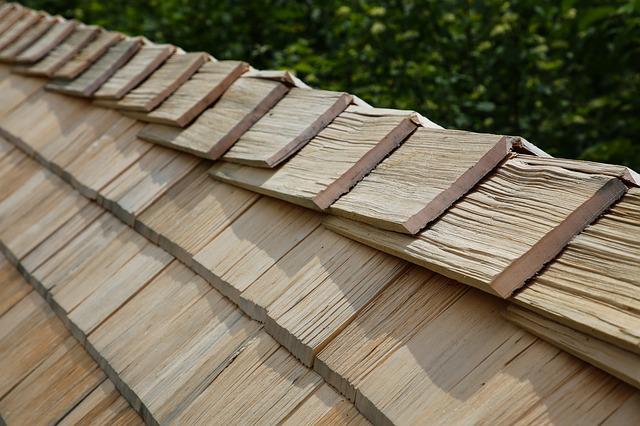
At first glance, wooden shingles might not be the intuitive choice for the ecologically minded, but let's take a deeper look. Not only can timber actively reduce carbon dioxide emissions during growth, but it also makes for a great replacement for more energy-intensive materials like concrete or steel in building, drastically lowering greenhouse gas emissions from that sector of the economy.
As a matter of fact, using timber instead of bricks can cut carbon emissions by an average of ten tonnes, and using timber instead of one cubic meter of concrete can save one tonne of carbon dioxide emissions.
The carbon footprint of timber
Increased demand for trees would result in more trees being planted, reducing carbon in the environment and producing cleaner, safer air. This is only true; however, if the timber industry is sustainable, meaning that for every tree cut down for timber, another tree is planted to maintain a balance.
While it's great that wood is in such high demand, this boon has a potential downside if the carbon emissions from lumber production outweigh the carbon sequestered by forests using wood.
Evaluating the timber industry's potential for cutting down on greenhouse gas emissions requires taking a close look at the carbon footprint of timber products.
Compared to other construction materials, such as concrete, metal, or plastic, timber leaves a much smaller carbon footprint because of the low energy needed to extract the basic ingredients. Planting trees is good for the planet and helps reduce timber's carbon footprint.
Scientists refer to trees as "carbon sinks" because of their ability to absorb carbon from the atmosphere and store it in their wood, plant tissue, and soil. Because of their ability to take in large quantities of carbon dioxide from the air, forests play a crucial part in the global carbon cycle.
The largest contributor to timber's carbon footprint is transportation. Cutting and curing timber and using it in the building requires very little energy and only the most basic equipment. Direct and indirect emissions combine to make up the total for timber transport.
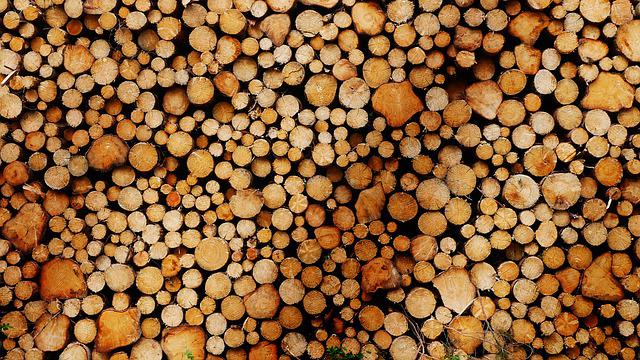
Trucks hauling timber typically consume more fuel than the normal truck since they must travel longer distances through more challenging terrain, such as rural roads, mountainous areas, and graveled forest roads. Timber lorries have a shorter lifespan than regular road haulage vehicles because the rugged terrain greatly strains the engines.
In addition, frequent heavy loads on minor public roads leading to lumber forests cause them to deteriorate quickly and necessitate frequent maintenance. All of these increase the need for timber lorry production and maintenance as well as road maintenance, hence more greenhouse gases are produced by moving lumber.
Using wood shingles has the following advantages:
Cedar's inherent insulating properties come from its "loose" cell structure, making it ideal for use in green roofing. Because your roof is made of natural cedar, it will keep the temperature of your attic lower in the summer and higher in the winter.
Other roofing options necessitate substantial fossil fuel expenditures for both the original acquisition (mining of metals, extraction of oil) and the transformation of raw materials to finished products. For green roofing, the process of turning cedar trees into shingles is time-consuming but not energy-intensive; the trees not only provide oxygen but also remove carbon dioxide from the air and reduce your need for fossil fuels for heating.
Timber has a significantly more sustainable interaction with the carbon cycle than steel or any manufactured building material.
Cities and suburbs often experience warmer temperatures than their more rural neighbors. Most modern building exteriors are highly impermeable and have a low solar reflection. Also, they are typically constructed from high-density materials that take in plenty of heat and give it off slowly.
The urban heat island effect is exacerbated by heat absorption by concrete, asphalt, and other paving materials, although green roofs can mitigate this problem. A green roof consists of a synthetic waterproof membrane and a growing medium, typically soil and inorganic materials.
By transforming rooftops into veritable gardens, living roofs provide homeowners with a novel and environmentally responsible roofing choice. Green roofs, often called living roofs, are roofs covered in grass or other vegetation, preferably indigenous species, and can range from being completely grass-free to being completely overgrown with vegetation.
Green roofs have several advantages, such as preventing rainwater runoff and increasing energy efficiency, but they also require regular maintenance and can be costly to build. They serve to filter the air, lower the temperature, and slow the pace of water erosion.
The house's foundation will also require more (and more costly) support to accommodate the new load. Additionally, green roofs are very heavy and need to be supported by an additional framework, and the membrane they require is made from petroleum products.
Green roofs mitigate the heat island effect caused by the accumulation of heat from the ground and the sun on concrete, asphalt, and other building materials, in metropolitan environments.
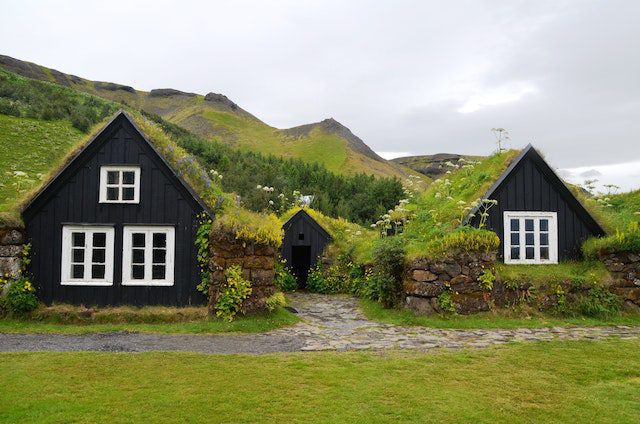
A green roof is a roof that is partially or completely covered with vegetation and a growing medium, planted over a waterproofing membrane. Green roofs provide excellent insulation, reduce energy consumption, and lower heating and cooling costs. They also improve air quality, reduce noise pollution, and help to mitigate the heat island effect. Green roofs can also extend the life of a roof by protecting it from sunlight, wind, and rain. They are also attractive and can create an oasis in an urban environment.
Neil Platt, Director, Emerald Home Improvements

More and more households are interested in sustainable roofing to lower their carbon footprint. Sustainable roofing helps homeowners lower their carbon footprint by using materials with a smaller negative effect on the environment.
Being a mineral, natural slate's durability and eco-friendliness make it an easy topic of conversation.
Slate roofs: The best ecological option
Natural slate will continue to be eco-friendly throughout every phase of its lifespan. This has made it one of the best natural options for eco-friendly construction.
Slate has a small carbon footprint because of its easy and efficient manufacturing method. The mineral composition of slate ensures that it is entirely natural.
Natural slate has a long lifespan and may be recycled simply after its usefulness has ended. As the most resilient roofing material, slate can last for over a century.
Natural slate only goes through the procedures of extraction and processing; therefore, it releases no chemicals. Slate is an eco-friendly option because it may be used without the need for any synthetic or chemical ingredients.
Natural slate is one of the most eco-friendly building materials available for a variety of reasons. Instead of using fiber cement for a roof, natural slate can save up to 6.2 tons of CO2 emissions.
Among roofing options, slate has the lowest embodied energy because it is a natural product. Since it has an embedded carbon value that is no higher than 16% of that of other roofing materials, it is an excellent option to go with. Slate roofing is quite effective against heat, making the interior of the house considerably more comfortable.
The Inventory of Carbon and Energy, which evaluates the amount of energy and carbon in building material, found that natural slate had the smallest footprint. The production of other materials is more time-consuming and harmful to the environment, such as ceramic tiles, which necessitate a great deal of energy.
Roofing using slate is one of the greenest choices available. It has many positive effects on the environment, as detailed by the National Slate Association:
| Tiles | C02 per kg |
| concrete tiles | 0.19kg of CO2 per kg |
| clay tiles | 0.43kg of CO2 per kg |
| natural slate | 0.005 and 0.054kg of CO2 per kg |
When considering the effects on the environment, natural slate is the finest option for roofing material. Slate is the most environmentally friendly roofing option because it is made entirely from natural resources and uses the least amount of energy in its production.
The manufacturing methods of other products are far more intricate, and as a result, they have a greater ecological footprint. To produce zinc, for instance, requires a substantial quantity of electricity.
Slate is formed entirely from natural processes over millennia; it is chemical-free and environmentally friendly compared to other roofing options. The use of slate, then, is highly recommended for those concerned with their environmental impact.
As an engineer and a home-improvement business owner, I can attest that slate is a popular low-carbon footprint option for roofs. Slate is a natural stone that is both durable and attractive. It is also one of the most environmentally friendly roofing materials available, as it is 100% recyclable and requires no chemicals or other synthetic materials to produce. In addition, slate roofs have a very long lifespan, often lasting for centuries with proper maintenance. For these reasons, slate is considered an excellent choice for anyone looking for a green roofing option.
Ludovic Chung-Sao, Lead Engineer & Founder, Zen Soundproof
The argument on the sustainability of slate:
As much as slate is naturally used as-is without any in-between processes with the least carbon footprint, there are a few arguments on the sustainability of slate. Even though slate is beautiful and exceptionally long-lasting, it is also highly expensive, heavy, and requires a lot of energy to mine, manufacture, and transport.
Slate roofing is heavy; thus, it requires more support than other roofing types, which need more materials. If you wish to install a slate roof, you would have to deal with the concern of your roof's ability to hold it.
It is argued that concrete roofs are sustainable because locally sourced sand, cement, water, and iron oxide pigments are the building blocks for concrete roof tiles. However, for every tonne of concrete made, an equivalent quantity of carbon dioxide is released into the atmosphere making the concrete industry the second largest contributor to global warming.
Quarrying the components necessary to manufacture concrete can be harmful to local surroundings, in addition to releasing enormous volumes of CO2. In addition, transporting concrete tiles can continue to result in a greater quantity of carbon emissions.
Recycled asphalt shingles are growing in popularity in the United States as more and more states adopt their use in the construction or maintenance of highways. Asphalt shingles recycled into new asphalt are a common component in pavements, roads, and other roofing products.
Minnesota's municipal government has elected to construct bicycle and hiking paths out of recycled asphalt shingles. In addition, Georgia has mandated that 5% of all road and paving mixtures be made up of asphalt reclaimed from industrial waste.
Even if asphalt shingles get a poor name for being less environmentally friendly than certain other roofing materials, at least you know the waste from your home's tear-off will be put to good use. By reusing asphalt shingles, businesses like construction and transportation can save a lot of money, minimizing both their expenses and carbon footprint.
The roof is a crucial part of any building because it protects the interior from weather and damage. Installing them is no easy task, as it must be done correctly to ensure their functionality.
The roofer's level of comfort is often disregarded as an important consideration. If they want to get the job done right, roofers need to be able to navigate a wide range of surfaces with varying degrees of slope.
When working on a roof, wearing shoes or boots that provide ankle support without restricting your range of motion is important. Wearing shoes with good attributes allows comfortable mobility and prevents slipping.
The choice of working shoes largely matters in this case leading to the question: Are converse good for walking on roofs?
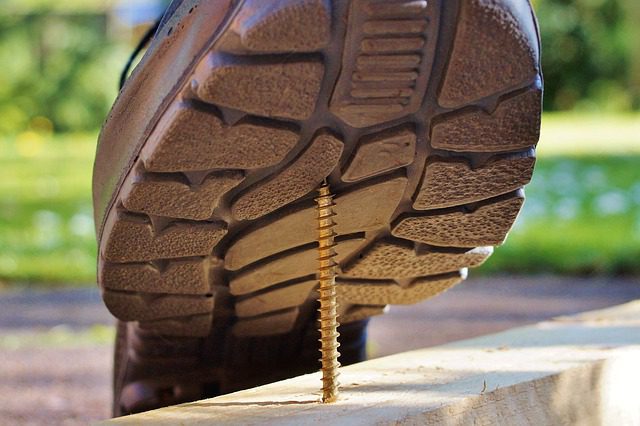
Working on roofs is one of the most common demanding jobs ranging from building new roofs to maintaining them, and roofers find themselves working in different weather conditions. Whatever the conditions you're working in, there is one thing you'll always appreciate: a good pair of shoes.
It is easy to slip and fall when working on a roof due to the steep incline or loose materials. Even relatively flat roofs might make it tricky to maintain complete stability while pretending to perform strenuous work.
Working on these roofs gets even more challenging in wet conditions, and you'll want a sturdy pair of shoes that won't let you down. You'll find comfort in its superior grip, sturdy durability, and the fact that it won't make you sweat so much that it feels like you've been hiking all day.
In addition, you need shoes that will keep you safe from any sharp objects, such as protruding nails, and the general comfort of your feet after working. A wide variety of footwear fits that description, but plenty don't, and the incompatibility isn't always immediately apparent.
The variety of shoes available and the significance of foot safety, performance, and other factors can make it difficult to settle on a single pair to purchase.

Developed in the early 20th century, Converse sneakers were originally designed to aid basketball players in their quest for comfort and flexibility. Since their debut, the shoe's design has stayed exactly the same.
The shoe consists of a white rubber toe cap, a stitched top, and a brown or rubber tan sole. Converse shoes are great since they are versatile, lightweight, and comfortable.
Skater shoes among roofers were popular because of their excellent grip area and pattern, but this should not insinuate that they are the ultimate non-slip roofing shoes. Converse are long-lasting footwear because they use superior materials in their construction with gum rubber outsoles that are durable enough for regular wear and tear.
A lot of roofers wore converse and still do when working on their roofs. The line is drawn if you have to comply with Occupational Safety and Health Administration (OSHA) regulations if you have a workforce that, in this case, would require steel-toed shoes.
Although roofing in Converse has several advantages, not all roofers are familiar with its specifics. Converse shoes are versatile, but can they be worn on the roof? Slippery shoes are a major no-no when you need to go around on a roof.
To begin, given that they are predominantly made from cotton and other textile materials, Converse shoes are not suitable for use in inclement weather. As a result, when the weather takes a turn or if the shoes are exposed to precipitation, they become damp and cold.
For another, they don't do anything to keep your ankles in place. Working on inclines requires special shoes with excellent ankle support to avoid twisting ankles.
Finally, the bottoms of a pair of Converse shoes aren't designed for traction and rough surfaces. Converse shoes are only recommended to be worn while it is dry outside.
Converse without socks is a recipe for blisters, especially on steep slopes. Listed below are some suggestions for making the most of your work in Converse.

As reported by OSHA, slips, and trips account for a disproportionate number of occupational accidents. They account for about 40% of all recorded major injuries and can trigger other equally devastating events like falls from great heights.
The majority of reported public injuries are the result of slips and trips. Before you go up on the roof with these well-known shoes, you need to know if they are non-slip.
If you are a roofer thinking about wearing Converse to work, it is crucial for your safety to know whether or not they are slip-resistant. Converse sneakers include a diamond pattern etched into the gum rubber outsole for better grip since they were originally designed to be worn on the slippery surfaces of indoor sports courts.
Converse shoes have qualities that make them more slip-resistant compared to other shoe types:
Shoe manufacturers typically incorporate a gum rubber outsole when creating footwear for indoor hardcourt sports like squash, badminton, and tennis. Converse shoes are known as "non-slip" because gum rubber provides exceptional traction on wet and slick surfaces.
The gum rubber soles of a pair of Converse shoes actually soften with wear. They heat up owing to the friction with the ground and your body heat, which helps provide the rubber with even more traction.
A gum rubber bottom has certain benefits in that it does not leave marks on a surface, so you won't have to worry about the look of the roof. Second, the increased traction created by the rubber's heating while you use them.

Converse sneakers are well known for their distinctive, diamond-shaped tread. If the sole of a pair of Converse shoes were completely smooth, they would slide right off of anything.
The outsoles' design is an excellent complement to the slip-resistant gum rubber from which they are produced. The design is ingenious because it improves traction precisely where it's needed most—on the balls and heels of the feet.
For over a century, converse has refined its diamond pattern into the most effective non-slip sole. The addition of patterned, gripping tread to these zones makes walking on these surfaces easier and safer.
Will the treads wear out?
When evaluating Converse's "non-slip" quality, there are a variety of other elements to think about. Consider how they fare in comparison to other footwear, how well the tread performs in wet conditions, and whether or not they will become slippery with wear.
Inquiring minds want to know how long the non-slip properties of converse shoes last. The outsoles of your shoes will wear out faster if you walk daily on rough surfaces, so keep that in mind.
Constant use will eventually smooth down the diamond pattern that resists slippage and weaken the grip. Outsole wear indicates it's time for a new pair of Converse.

To comply with the Health and Safety at Work etc. Act 1974 (HSW Act), businesses must take reasonable precautions to protect the well-being of their workers and anyone who their operations might harm. Slips and trips can be avoided with the help of the methods outlined below, which employers, employees, and safety representatives may find useful.
It's important to eliminate potential hazards like slipping and tripping.
When it comes to the workplace, what can be done to reduce the risk of trips and falls?
A solid management system will make it much easier to pinpoint issues, settle on a course of action, put that plan into motion, and evaluate its success. Think about the potential sources of slip and fall injuries in the workplace, and then figure out what kind of controls will be most effective in preventing such incidents.
The next step is to actually implement these preventative measures. Focus on the genuine threats that can actually hurt you and the potential for injury, and the people who could be affected by the accident should be carefully considered.
Employees may see things that aren't clear to you and may have good ideas for controlling the risks, so asking them what they think the hazards are is a good idea.
Slip-resistant footwear is required when working on surfaces that can't be kept dry, such as in the case of roofing felt or underlayment or the deck during wet conditions. Trials must be done to make sure the shoes are a good fit for you and the surrounding conditions before using them for work.
If you are an employer of a roofing company, you are required by law to protect your employees and others from any harm. To the extent permitted by law, you, as an employer, must take reasonable precautions to prevent injury to your employees and others.
This is the bare minimum required by the Management of Health and Safety in the Workplace Regulations 1999:
If your employees are wearing shoes that may put them at risk, be it fall damage or injury through sharp objects, you are required to assess the risk and mitigate it to ensure their safety.
Is there anything employees may do to lessen the likelihood of trips and falls?
Employees are also obligated to take reasonable precautions to avoid endangering themselves or others and to make appropriate use of any safety gear that is made available to them. When working:
Converse has a good non-slip tread; however, it may not be the most durable in extremely wet or dry situations. No matter what shoes you wear, you need to be extra cautious when walking in the rain or on slippery surfaces.
The converse should be slip-resistant in moderate rain, but the tread won't be as effective in heavy rain. Wearing ice grips on the outsoles of your Converse shoes might increase their slide resistance, making them more suitable for use in icy conditions.
If you plan on wearing your Converse in the rain, you may want to treat the canvas with a canvas-safe spray. They are made from canvas, so they will also make your feet wet in wet weather, which is not comfy at all.
The sunny weather in Phoenix may make you want to escape to a remote resort and spend your days lounging by the pool while sipping margaritas. Fun can be had at any time of year, although winter is a particularly popular period for tourists.
Resist the urge to give in, as off-season travel offers some of the best prices at hotels and resorts. Enjoy the many resorts and spas, visit world-class museums, marvel at the desert's natural splendor, hike the many mountains surrounding the city, and more of the many things to do in Phoenix Arizona.
Desert terrains can be expanded through the exploration of Phoenix's many attractions. The greater Phoenix area is covered in this article.
Now, without further ado, I present to you the best of what Phoenix has to offer.
The Musical Instrument Museum (commonly known as MIM) in Phoenix is a lot of fun and a unique experience for any visitor to Phoenix, Arizona. Beautifully and carefully curated, it is the only Museum of its kind in the world dedicated to musical instruments from all around the world.
There is so much variety in the Museum's displays of instruments from all across the world. The collection of more than 15,000 musical instruments from all corners of the globe is unparalleled and sure to please any music lover's ears.
When you buy a ticket, you will also receive a headset, and afterward, you can explore the many zones that stand in for other continents and regions, read up on the locals, and witness live performances of some of the instruments you've been learning about.
The MIM offers a wide variety of fun experiences for its guests. It's fascinating to read about an instrument and then watch a video of that instrument being performed.
There are African drums and harpsichords among the rare guitars and other instruments on display at this Museum. In addition to the concerts, they also feature John Lennon's piano.
All of the instruments are shown in state-of-the-art, hi-tech showcases that let visitors see, hear, and interact with the pieces. Great and well-known instruments, such as those played by John Lennon, Elvis Presley, Taylor Swift, Carlos Santana, Johnny Cash, and others, are among those in the collection.
It's now possible to hear the instruments as they were originally intended to be heard. The music and instruments of various folk, ethnic, and tribal groups can also be viewed and heard in their native settings.
The Desert Botanical Garden in Phoenix is a popular destination for tourists because it provides a welcome respite from the heat of the surrounding desert. It features a desert garden on 140 acres with 50,000 plants, plus food, shopping, and a library.
Parking and entry are both accessible for people using wheelchairs. You can take a stroll through the garden's peaceful walkways, enjoy the activities held there, eat at the eateries, and get an education on desert life.
Most people, when they imagine a desert, see sand and various shades of brown. The garden features over twenty distinct exhibits for guests to enjoy, such as a variety of cacti and succulents, an extensive collection of plants with their own saltwater pools, and even a section specifically designed for butterflies and birds.
There aren't many people that travel to arid regions in hopes of seeing beautiful vegetation. The Desert Botanical Garden was built to dispel the widespread misconception that the desert is completely devoid of vegetation.
You might find this thought baffling, given how scorching Arizona and its deserts can get. At 1201 N. Galvin Parkway, Phoenix, Arizona 85008, you'll find the Desert Botanical Garden.

Visit the Phoenix International Raceway to get your heart racing if you're a fan of high speeds and fast cars. The raceway is a tri-oval racetrack that spans a distance of 1 mile and features minimal banking.
The NASCAR Racing Experience it's as real as it gets, and you get to put your driving skills to the test. Pre-booking their VIP experience, which includes paddock tours and pit lane access, will make you feel like a real insider on race day.
After a briefing and training session at a Drivers Meeting, you'll get to spin the tires of a NASCAR race car during timed sessions at some of the best tracks in the country. But if that's not thrilling enough, you can also try your hand at driving a go-kart or taking a "hot lap" around the track.
One of the many reasons why visitors to Phoenix should check out Taliesin West is that it is a National Historic Landmark. It was designed and constructed by the legendary Frank Lloyd Wright, who is widely regarded as a seminal figure in the development of a distinctively American architectural style.
For those of you who have a passion for architecture, a trip to Scottsdale's Taliesin West, a UNESCO World Heritage site and National Historic Landmark, is an absolute must. Its architectural style makes it a delightful surprise in the midst of what might otherwise be a boring stretch of the Phoenix desert.
From 1937 through 1959, renowned architect Frank Lloyd Wright spent his winters at his winter house in California, Taliesin West. Today, the home serves as the Frank Lloyd Wright Foundation's administrative headquarters and is available for tours and rentals by the public and business sectors.
The residence went through improvements when Wright visited annually, working with his students to carry out his vision. Inspiring the home's design were the neighboring trees and grass.
The home is a unique work of art. The walls were fashioned from local stones, and many of the angles and flows of the rooms drew inspiration from the environment as well.
Everything in the camp, from the studios to the homes to the theaters and amenities, was built with local materials and designed with the help of art and architecture students to blend in with the natural surroundings. Built at the bottom of the spectacular McDowell Mountains, these 600 acres of property were chosen simply owing to Wright's love of the Sonoran Desert.
Concerts and art exhibitions are only two of the many special events that are regularly staged to spruce up the area. In addition, certain excursions require advance scheduling in order for visitors to get access to the grounds.
Visitors can take advantage of tours and guides who can shed more light on the site's nuances and Wright's history. These tours of Taliesin West can last anything from an hour to three hours and cover a wide variety of topics.
Taliesin West can be found at 12621 N Frank Lloyd Wright Blvd, Scottsdale, AZ 85259. Open from 8:30 am to 6:30 pm daily, and there is also a gift shop to peruse.
Chairman of the Phoenix Planning Commission and a driving force behind the purchase of the land, James C. Dobbins, was honored with the naming of the lookout in his honor.
At this magnificent lookout, you can see more of Phoenix than from anywhere else. Numerous mountains surround the valley, providing a variety of hiking opportunities and scenic vistas.
At an elevation of over 2,000 feet, it is the highest point reachable by car. Whether you plan on visiting South Mountain Park, you should first check the park's website to see if any roads will be closed.
In this beautiful desert park, visitors can enjoy hiking on more than 51 miles of trails. Find the Dobbins Lookout at 10919 S Central Ave, Phoenix, Arizona 85042.
This is not a natural cave despite its name; instead, it is a flood control tunnel that is frequently occupied by tens of thousands, even hundreds of thousands, of Mexican Free-Tailed bats.
More than ten thousand Mexican bats winter in Phoenix before making the long journey back to Mexico in the fall. You should just observe these amazing animals in silence and in accordance with the posted rules and regulations.
When daytime comes around, they go to sleep, but as soon as dusk approaches, they cover the sky. Dusk is the best time to visit because that's when the bats come out to feast on insects, filling the sky.
Considering its proximity to Phoenix, it is truly a sight to behold. Because the bats don't seem to fear humans, you should be prepared for some close calls as they fly by.
It is found at 3698-3694 E Colter St, Phoenix, AZ 85018, United States
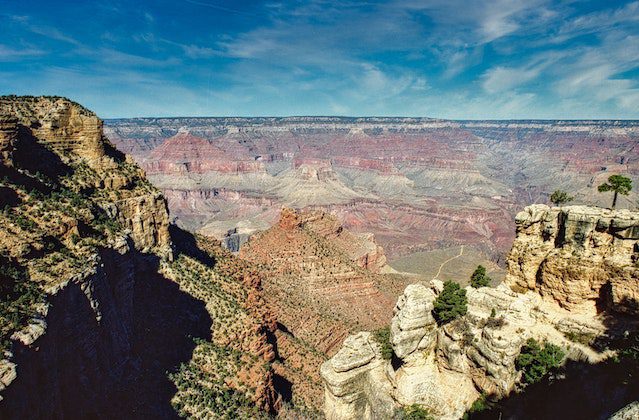
The Phoenix mountains are among the many unique things about the city. You can get a good workout climbing to the top of a mountain and being rewarded with a great view of Phoenix and its environs.
The parks do an admirable job of showcasing the desert in all its splendor. Incredible views of the valley from the summits make the workout seem less like work.
Many great hiking sites may be found in state and local parks across the Phoenix region. Beautiful cactus and other desert plants may be found everywhere, and after the spring rains, the landscape is blanketed in a lush carpet of greenery and colorful wildflowers.
Some of the many places you can hike include:
Located in the heart of Phoenix, just a stone's throw away from Heritage Park, lies the Arizona Science Center, a public science museum often regarded as the best in the state.
The four-story science center features numerous interactive exhibits. The planetarium is state-of-the-art, and it's never too late to expand your mind via exploration of the cosmos or the wonders of the natural world.
The Arizona Science Center is a family-friendly attraction downtown, where visitors of all ages may explore more than 300 interactive exhibits, see live science demonstrations, and gaze at the stars in the Dorrance Planetarium for one admission.
Exhibits are typically offered hands-on, demonstrating everything from friction and gravity to the solar system and biology, weather and energy, and aviation IT. Regardless, visiting the science center is one of the many must-do activities in central Phoenix.
The learning hub was made with kids in mind; there's a lot for them to pick up and learn there. If you're over 21, get to the center's science with a twist event, which features a night of science-themed programs, beverages, dancing, and a wonderful time.
The following is the complete address: 600 E Washington St, Phoenix, AZ 85004, USA.
For those who crave excitement, the 10-acre Castles N' Coasters amusement park features rides for all ages, from the Sky Diver roller coaster to the family-friendly vintage carousel. Castles N' Coasters, located in the city's northwest, has enough thrilling attractions to keep you entertained for a full day.
Even while Phoenix isn't necessarily home to some of the best amusement parks in the country, it doesn't mean there aren't some exciting destinations that fit the bill.
It's possible to choose from a variety of thrilling rides, splashdown, a log flume water ride, and when the craving for speed has been satisfied, visitors can enjoy the 18-hole mini-golf course or the neon-lit arcade.
Intense heart rate increases are expected on roller coasters like the Desert Storm, which features numerous loop-de-loops. And that's not all there is to do here; there's also a drop tower, arcade, bumper boats, cars, and go-karts.
It is located at 9445 N Metro Pkwy E, Phoenix, Arizona 85051.
This garden is a welcome respite from the heat and aridity of Phoenix. The Japanese Friendship Garden first opened in 1987 to strengthen ties between Phoenix and Himeji, Japan.
Japanese Friendship Garden is an actual Japanese garden in the midst of Phoenix, in contrast to the Desert Botanical Garden, which is dedicated to the desert and native species. The architects of Himeji created this tranquil sanctuary full of lush vegetation and koi fish to decorate the carefully planned landscape.
The 3.5-acre site features a koi pond stocked with over 300 fish, a 12-foot waterfall, stone footbridges, lanterns, and a tea house where traditional ceremonies can be held.
You may wish to include a stop at this tea garden when planning your trip to Arizona. It is also the best spot to experience a traditional Japanese tea ceremony.
The garden also hosts a number of other events, such as craft workshops and summer jazz nights, in addition to tea ceremonies. There are also many additional events where people can see and try Japanese dances, arts, and cuisine.
When in Phoenix, stop by the Japanese Friendship Garden at 1125 N. 3rd Avenue, Phoenix, AZ 85003
The Phoenix metropolitan area and its neighboring areas are rich in archaeological potential, so it's no wonder that the Arizona Museum of Natural History is well-known for its dinosaur displays. The Arizona Museum of Natural History near Tempe Town Lake is a fun and educational destination for visitors of all ages.
The Museum is famous for its extensive collection documenting the history, culture, and migration patterns of the Grand Canyon State's native species and artifacts.
You can go on a Paleontological excavation in Arizona, learn about the history of Western North America's indigenous peoples, and much more.
The Museum has been in operation since 1977 and is located in the area around Phoenix in the building that housed Mesa City Hall. Guests can explore the Museum's multi-story Mesozoic Era exhibit, Dinosaur Mountain, complete with a three-story waterfall.
Young explorers can get up and personal with lifelike replicas of dinosaur skeletons, while aspiring paleontologists can practice their skills in the Museum's Paleo Dig Pit.
Because of the city's rich archaeological past, the Arizona Museum of Natural History is among the top Phoenix attractions.
It is located at 53 N Macdonald, Mesa, AZ 85201.
Presenting over 17,000 pieces of cutting-edge international and modern art, the Phoenix Art Museum is the largest art museum in the southwestern US and a must-see for art lovers. It may not be as huge as some of the world's best art museums, but it certainly holds its own.
It houses so many wonderful paintings, including the permanent collection and the fantastic temporary displays. This Museum features a wealth of entertaining modern art shows.
Collaborating with the University of Arizona's Center for Creative Photography means that guests can also indulge their passion for photography here!
You may find it at 1625 N Central Ave, Phoenix, AZ 85004.
Wrigley is a household name since it is synonymous with the ubiquitous chewing gum manufactured under that name all over the globe. If the name Wrigley seems familiar, it's probably because of the gum by that name.
It turns out that the estate perched over Phoenix belonged to none other than chewing gum magnate William Wrigley Jr. This corporation was founded by William Wrigley Jr., who in 1932 commissioned the construction of a magnificent mansion to celebrate his wedding anniversary.
It enjoys a commanding position on a hill, taking in breathtaking panoramas of the surrounding landscape, including both urban areas and mountain ranges. Those interested in the building's history or rumored hauntings might take a tour to learn more.
The magnificent tile-work, which includes tiles originally made at Wrigley's tile factory on Catalina Island, gives the building a decidedly Californian vibe, making it seem more like a destination than a destination in Arizona. The tiles had to travel over a hundred miles from the chateau to the Californian factory, so mules were used to make the journey.
As one of the best local restaurants and event spaces, it has become a popular destination for visitors visiting Phoenix. Join one of the 45-minute tours of the mansion if you're not interested in hosting an elegant brunch or wedding reception there.
The address for the Wrigley Mansion in Phoenix, Arizona, is 2501 E Telawa Trail.
To promote American Indian art, the Heard Museum was founded. Located north of Phoenix, Maie Bartlett Heard and her husband established the Heard Museum in 1929, not long after they had purchased the La Ciudad Indian Ruin.
The Heard Museum in Arizona is widely regarded as one of the best museums in the United States for showcasing Native American culture and artifacts. This Museum houses around forty thousand works of ancient and contemporary Native American art and artifacts in its award-winning displays.
Phoenix has a significant Native American population, and this Museum is an excellent resource for learning about the region's history and culture. This Museum has a unique take on art and culture, with a regional focus on the American Southwest and North America.
Since its completion in 1929, this landmark has been a major venue for showcasing American Indian art and culture to an international audience. Many festivals, educational events, and exhibits on topics like Navajo weavings, Hopi katsina dolls, Zuni and Navajo jewelry, ancient ceramics, and woven baskets.
The address of the Heard Museum in Phoenix, Arizona, is 2301 N Central Ave, Phoenix, AZ, 85004, USA.
Consider a romantic dinner cruise or a scenic daytime adventure with Dolly when looking for things to do in Phoenix. Excursions last between 1 hour and 30 minutes and 3 hours.
The Apache Trail is non-negotiable, but why spend hours behind the wheel when you.
People can take dinner excursions or sight-see the lake's beautiful waters aboard this vessel. A few additional sights are worth seeing in this historic stagecoach stop along the Apache Trail in the American West.
Cruises depart during the day at around midday and evening at sunset, with the exact times altering seasonally. You won't find anything else like it in Phoenix, so don't miss out!
Approximately fifty miles east of Phoenix's downtown, in a place called Tortilla Flat Arizona 85117, at 16802 AZ-88, is where you'll find Dolly Steamboat. There is a wide variety of cruises to pick from, and customized tours are also available.
Goldfield Ghost Town is a tourist attraction in Phoenix, Arizona, rebuilt from the original ghost town. A trip to the Goldfield Ghost Town is a great way to spend a day.
After gold was discovered in the Superstition Mountains in 1893, the community of Goldfield was established on the eastern side of the Valley of the Sun. When the gold ran out, the mine shut down in 1926, and the town was slowly abandoned.
Many of the historic structures along Main Street are open for viewing. The mine tour, train journey, and other entertainment options are just the beginning.
With its many authentic western structures and skilled re-enactors, this town provides tourists a flavor of the Old West as it was at its peak. Another activity is horseback riding.
If you aren't interested in participating in one of the town's excursions, you might want to try visiting the Museum and staying for the free gunfight show.
The address of Goldfield Ghost Town is 4650 N. Mammoth Mine Road, Apache Junction, Arizona 85119.
The Tres Rios, Environmental Restoration project restores 700 acres of wetland and riparian habitat along the Salt River. The project connects the restored wetlands to a nearby wastewater treatment plant.
The wastewater treatment plant pumps recovered water to the wetlands, where plants and animals drink it before it's released into the river. This project repairs a natural ecosystem by restoring the Salt River to the early 1800s.
Tres Rios is home to around 150 bird and animal species, including muskrats, raccoons, skunks, coyotes, bobcats, and beavers. Cottonwood groves, willows, mesquites, and other desert shrubs attract migrating and wintering songbirds.
Do you ever think about how people in the Valley of the Sun put up with the oppressive heat before air conditioning was commonplace? The Museum was a Queen Anne Victorian home built in 1895, and it has been meticulously renovated to serve as a museum interpreting Phoenix's past.
The Museum was once a beautifully restored Queen Anne Victorian residence from 1895 where visitors could learn about the city's history while taking in its splendor.
Visitors can see how early Phoenix families actually lived by touring every room in the house. You should know that Rosson House is only open to the public during guided tours with a typical length of 60 minutes.
The Hall of Flame Fire Museum is another excellent option for a one-of-a-kind museum visit. There's a good reason why the Hall of Flame Fire Museum in Phoenix, Arizona, is one of the city's most popular tourist destinations: it has a great name.
This Museum is a homage to firefighters and a historical collection, with exhibits spanning from 1725 to the present day and covering an entire acre. This popular destination is the largest firefighting museum in the world. It honors the service and sacrifice of all first responders and pays tribute to the firemen who put their lives at risk while protecting the public.
The antique fire engines on display, some of which were built in the 1700s, are the primary draw. Most people who check out the Hall of Flame Fire Museum say that the refurbished fire engines are the highlight.
The Museum also displays automobiles from other countries. This Museum is fantastic if you want to learn the historical background of a topic you haven't given much thought to before.
You will gain a lot of knowledge and have a fantastic experience. From the most recent innovations in firefighting technology to artifacts dating back to 1725, this fascinating Museum celebrates firemen in all their illustrious glory.
The Hall of Flame Fire Museum can be found at 6101 E Van Buren St, Phoenix, Arizona 85008.
The Phoenix Police Department's history, beginning in 1881, is on display at the Museum. The Phoenix Police Museum is an excellent resource for anybody interested in Phoenix's law enforcement history, spanning more than 130 years.
The Museum houses several informative displays, some of which encourage audience participation. Both historic and modern vehicles, as well as a memorial to the victims of September 11th, and the inspiring experiences of police officers who have protected the city are on display at the Museum.
Aspiring investigators can peruse images from actual cases and examine authentic equipment, unlike in traditional exhibitions. If you like art and history, this is one of the most interesting things to do in Phoenix.
The Children's Museum of Phoenix is a must-see for any youngster, offering them a chance to explore science through a wide variety of hands-on activities, such as blowing bubbles, making crafts, and navigating obstacle courses.
There are a variety of exhibits and programs designed to engage, educate, and entertain children of all ages. With three stories and 48,000 square feet to explore, this Museum has something for kids of all ages, from infants to preteens.
Over 300 interactive displays allow kids to learn about various important subjects in a way that's both entertaining and instructive. Some of the most interesting displays include a noodle forest, a fort-building area, a small market, a kiddie cafe, Pedal Power, the Schuff-Perini Climber, and BlockMania.
It is located at 215 N 7th St, Phoenix, AZ 85034, United States.
There are many opportunities for outdoor fun in Phoenix. Phoenix is in the low desert; therefore, the winters are mild, and the summers are hot.
May through September is the best time to visit if you can stand chilly mornings and evenings and hot days. The monsoons typically last from about the middle of June to the end of September. It's wonderful from October through April.
In June, July, and August, temperatures average 105 degrees Fahrenheit (almost 41 Celcius). Temperatures in June and July average 110- and 118 degrees Fahrenheit (almost 48 degrees Celcius).